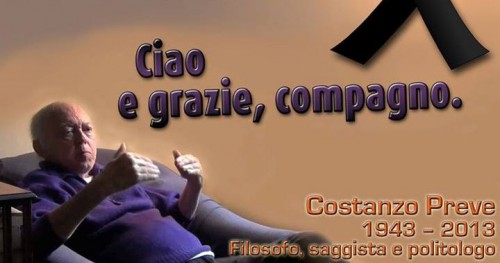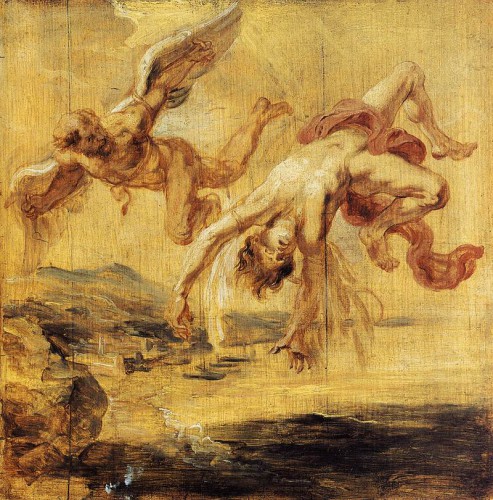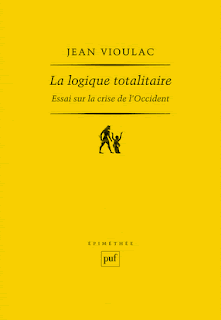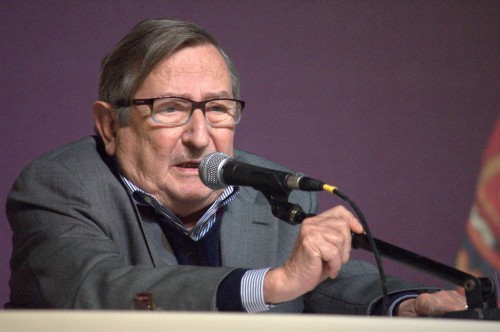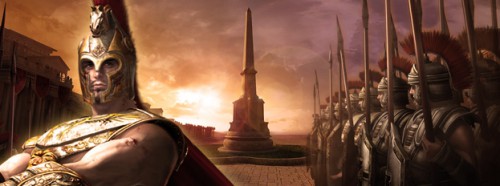
par Raphaël Chauvancy
Ex: http://www.infoguerre.fr
Dans le domaine de la pensée, un des actes fondateurs de l’Occident est la rédaction de la Guerre du Péloponnèse. Laissant les dieux à leurs amourettes de nymphes entre les lauriers roses, Thucydide analyse les actes, les évènements, les rapports de forces. Il étudie les impératifs d’un Etat continental, les atouts d’une cité maritime. Il décrypte la volonté ou la démesure des hommes et s’incline devant l’imprévu. Il invente l’histoire. Or, celle-ci n’est qu’un nom de muse pour désigner le choc des puissances projeté dans le temps. La puissance n’a pas bonne presse en Europe. Elle évoque au mieux une époque révolue, au pire le souvenir des Grandes Guerres avec leur cortège de massacres, de misère et de destructions. C’est une erreur et nous voulons le démontrer. Une réflexion sur l’histoire s’impose en préalable, nous l’avons vu. Mais qui sont les acteurs de la puissance ? Les Etats-nations sont-ils encore des référents valables à l’heure de la globalisation ? Voilà qui pose la question de la souveraineté. Pour un pays comme la France, une stratégie de puissance autonome est-elle souhaitable ou même viable dans un monde de réseaux ? Surtout, l’impasse ne peut être faite sur la question de la légitimité qui conditionne toute action dans les sociétés démocratiques contemporaines. Nous tâcherons alors de définir la puissance avant d’en dégager les domaines d’application privilégiés. Quelles sont les conditions de la puissance et, enfin, comment un Etat peut-il accroître sa puissance ?
Puissance et Histoire
Puissance et arbitraire
Le prince disait « je veux ». Il était obéi. En fonction de ses intérêts, des opportunités ou de son caractère, il libérait ses énergies dans telle ou telle direction. Le fait du prince, c’est la force à l’état sauvage. Elle n’élevait de constructions politiques que de sable. Ainsi, à la mort de Clovis son œuvre disparut-elle dans d’interminables guerres successorales.
Certaines construction politiques solidement enracinées dans une terre donnée, appuyée sur un peuple ayant une vague conscience de lui-même étaient appelées à durer. Le passage d’une domination patrimoniale au sentiment d’un destin commun préparait l’avènement des nations. Un frémissement connu en est la bataille de Bouvines où milices bourgeoises et chevaliers combattirent l’étranger aux côté de leur souverain.
Lorsque Louis XIV agonisant déclare « je m’en vais mais l’Etat demeure » (Bluche) il annonce le temps où la Nation devient autonome, irréductible à la volonté du souverain, mais doit suivre ses intérêts propres dans un contexte stratégique et de valeurs particulier. (Drevillon) Cette mutation est globalement achevée sous Louis XVI où le discours stratégique français s’élabore sur la base de la liberté de circulation, sur les droits des nations, sur, enfin, un véritable ordre international fondé sur l’équilibre des forces et la concurrence économique (Poussou). La guerre même contre l’Angleterre ne se veut pas totale, elle n’est qu’un rééquilibrage. La dialectique de la liberté des mers permet de mobiliser les flottes européennes contre la Navy au nom du droit des gens. Les jeux de puissances interdisent l’idée liberticide d’empire.
La puissance comme bien commun
Après la Révolution et tout au long des deux siècles suivants, l’idée de droit des gens étendue aux relations internationales va déboucher sur celle de guerre juste. La conflictualité doit se justifier et les nations refusent de verser leur or et leur sang pour une cause qui n’en vaille pas la peine.
La politique de puissance des nations est dès lors subordonnée au bien commun, ou du moins à sa représentation collective. La nation exige des comptes. La politique de puissance d’un Etat de droit n’est ainsi que l’expression de la prise en main de son destin. « La liberté implique de se risquer au déploiement de la puissance. » (Forget).
L’histoire a-t-elle un sens ?
Le drame de la pensée européenne contemporaine vient de sa passion des modélisations qui parfois la distrait du réel. Depuis qu’elle a rejeté Dieu hors des limites du monde, elle lui cherche un remplaçant pour signifier le monde, lui donner un sens.
Le siècle des Lumières a inventé le culte de la Raison. Il s’est imaginé que le progrès des sciences et techniques se ferait au bénéfice de l’homme. Hegel a formalisé ce rêve en imaginant l’histoire sous forme d’ascension. La conscience de l’homme franchirait des étapes et s’éveillerait progressivement.
Marx, enfin, a cru mettre à jour le ressort de l’histoire qui serait la lutte des classes.
Toutes ces théories et leur postérité se fondent en une seule : celle d’une main invisible guidant la destinée de l’homme.
L’historien intervient ici avec sécheresse. Il voit des facteurs, des bouleversements, des Révolutions parfois. Des données nouvelles à assimiler, des contraintes inconnues à surmonter, des constantes lourdes à maîtriser. Mais la marche de l’histoire est un mythe. Poursuivant une fin, l’homme en atteint souvent une autre, c’est ce que Jules Monnerot nommait l’hétérotélie.
L’homme est capable de s’affranchir des facteurs rationnels et même des conditions de son bien propre. Les ressorts psychologiques des individus et des peuples confinent parfois à l’irrationnel, ainsi de la guerre suicidaire du Paraguay contre la coalition du Brésil, de l’Argentine et de l’Uruguay où elle perdit héroïquement et sans profit les deux tiers de sa population de 1865 à 1870. Des individus, parfois, provoquent des ruptures. Alcibiade changeait, au gré de ses voltefaces, le destin de la guerre entre Athènes et Sparte plus sûrement qu’une flotte de trières en armes. Le génie de Napoléon valait 100 000 hommes. Un évènement anodin, parfois, met en branle les grandes tectoniques sociales et politiques. Il a suffi qu’un camelot désespéré s’immole par le feu en Tunisie pour bouleverser toute la sous-région.
L’histoire est donc constituée d’évènements prévisibles et de ruptures qui sont autant d’opportunités, exploitées ou non. S’il fallait lui donner un sens, ce serait celui de l’action, de l’interaction des communautés humaines. Il n’est d’autre destin que celui que l’on forge.
La fin de l’histoire ?
L’écroulement de l’URSS ouvrait l’ère de l’hégémonie américaine. En attendant que le monde nouveau se mette en place, les Etats-Unis n’avaient plus de compétiteur. La terre était appelée à devenir un immense marché où s’entendraient les démocraties. Les récalcitrants, dont Saddam Hussein fournit l’archétype, seraient punis. A la recherche de puissance succédait la coopétition économique. Francis Fukuyama pouvait avancer sa thèse de la « fin de l’histoire ». En France, Bertrand Badie le relayait à sa manière en proclamant «l’impuissance de la puissance ». Leur songe brumeux s’est évaporé au soleil de la réalité. Le « Grand échiquier » s’est remis en place. La Chine s’est réveillée. La Russie est redevenue une puissance. La crédibilité militaire occidentale s’est émoussée en Afghanistan. Le déclin européen s’est poursuivi tandis que le pivot du monde a basculé de l’espace Atlantique à l’arc Pacifique. La compétition est plus que jamais rude entre les individus, les peuples, les puissances.
Certes, l’histoire est tragique, c’est un lieu commun que de le rappeler. Vouloir en sortir c’est pourtant quitter le domaine de la liberté humaine. C’est délaisser l’action et entrer de plein pied dans l‘Age du renoncement (Delsol).
Intérêt de milieu et intérêts de possession : la fin de la guerre ?
La puissance a longtemps été territoriale. Les bâtisseurs d’empires rassemblaient des terres et entraient dans l’histoire. La puissance territoriale était aussi un enjeu de prestige. Meurtrie par la perte de l’Alsace-Lorraine, la France de la IIIe République fit preuve d’une véritable boulimie, conquérant à peu près tout ce qu’elle pouvait. Les terres, les montagnes et les déserts. Nous savons depuis les travaux de Jacques Marseille que l’empire colonial français fut un gouffre financier. Il fut aussi un formidable multiplicateur de puissance, véritable assurance-vie de la nation. Si la France n’avait pas eu Dakar et Alger, elle n’aurait jamais siégé à la table des vainqueurs du second conflit mondial. Elle disposait grâce à l’empire d’une certaine marge de manœuvre, d’une liberté de mouvement relative.
Tout cela est passé. Les enjeux territoriaux ont perdu leur valeur. Les intérêts de milieu ont relégué les intérêts de possession en marges des vecteurs de puissance. Les rivalités s’articulent autour de flux et de réseaux. Il est vain de contrôler un territoire. Au temps de la globalisation, le coût impérial est devenu prohibitif en termes financiers et de légitimité.
Certes, on trouve de remarquables exceptions, en Afrique notamment, et quelques tensions sporadiques en mer de Chine. Globalement, les grandes puissances ne s’affrontent plus pour une province. Elles se déchirent sur le terrain de l’économie. « Dans la mesure où la conquête géographique n’a plus vraiment de sens, n’étant plus la manifestation adéquate de la puissance et la mesure réelle du pouvoir, ces deux champs d’affrontement (l’économie et l’opinion) constituent en quelque sorte un autre moyen de faire la guerre […], d’imposer sa volonté aux autres – ce qui définit très exactement la puissance écrivait Raymond Aron » ( Delbecque). Pour être devenue économique, la guerre n’en est pas moins acharnée entre les peuples. Les friches industrielles sont le pendant moderne des ruines de guerres. Les batailles perdues ne laissent plus de morts sur le terrain mais des cohortes de chômeurs sans avenir. Perdre un marché, une compétence ou un avantage concurrentiel est plus lourd de conséquences sur la collectivité qu’un revers lors des campagnes d’antan. Eric Delbecque a pu avancer que « L’histoire de la guerre se définit donc comme le récit des métamorphoses de la contrainte ». Le monde contemporain est celui de la compétition tout azimut. Economique certes. Militaire, toujours. Mais aussi scientifique, sportive, culturelle…
Se réapproprier le temps long
La civilisation occidentale est essentiellement une civilisation historique. Elle se projette dans le temps, note ses actes, compulse ses archives. Elle se pense dans la durée – à l’inverse par exemple de l’aire de civilisation indienne (Angot).
C’est néanmoins en bousculant l’espace-temps qu’elle s’est rendue maîtresse du monde. La boussole et la caravelle ont aboli les distances, repoussé les limites du monde connu, aplani les contraintes, comprimé le temps, initiant le grand mouvement de la modernité – qui est le dépassement des déterminismes. Le formidable déséquilibre provoqué sur les sociétés traditionnelles a conduit à l’hégémonie européenne.
Mais l’Occident est désormais prisonnier du temps court. Il est mal armé pour appréhender, par exemple, la stratégie chinoise du long terme. Celle-ci est prête à renoncer à des avantages immédiats en vue d’un gain plus important. C’est, en échec, sacrifier un pion pour prendre une dame.
Aujourd’hui, son différentiel de puissance n’est plus tel que l’Occident puisse bousculer ses rivaux en les amenant sur son propre terrain d’espace-temps. Au contraire, il est arraché à son environnement privilégié. Il s’agit de réinvestir le temps long pour ne pas perdre les batailles de demain.
Etats et réseaux
Place des Etats dans le monde contemporain
Les relations internationales se sont longtemps articulées autour des seuls Etats. La modernité a bouleversé cet ordre. En Europe, le droit national s’efface devant le droit communautaire. Une entreprise de dimension mondiale comme Arcelor-Mittal peut défier l’Etat français.
Lorsque Maurras proclamait « la France seule » en pleine seconde guerre mondiale, il commettait déjà un anachronisme et faisait une grossière erreur d’analyse. La même proclamation aujourd’hui relèverait de la poésie surréaliste et serait à ranger au rayon des oranges bleues d’André Breton. Nous savons depuis Nye et quelques autres que le monde contemporain est celui l’interdépendance. Celle-ci « ne nie pas l’existence juridique des nations, ni les sentiments nationaux, ni les aspirations à la souveraineté, mais elle permet une lecture plus réaliste d’un monde où les flux d’échanges sont de plus en plus indépendants des organes d’administration des nations » (Baumard).
Les Etats ne sont plus les seuls acteurs de poids dans le monde global. Les entreprises ont atteint des dimensions critiques qui posent la question de la puissance privée (Buhler). Les organisations non-gouvernementales, les associations, plus globalement la société civile les contrebalancent.
Alors, l’Etat est-il encore l’unique source de stratégie de puissance nationale ? Non. Acteur de puissance, certes, il est aussi et surtout au service des acteurs de puissance nationaux. Il a un rôle de catalyseur. Enfin, en dernier ressort, il faut remarquer que les stratégies nationales s’effacent devant les stratégies concertées pour le rétablissement de l’ordre mais que ce n’est plus le cas dès que des intérêts vitaux sont en jeu (Razaux).
On a beaucoup glosé sur le déclin des Etats. La dernière crise financière a considérablement redoré leur blason. Ce sont eux qui ont sauvés banques et organismes financiers d’un naufrage global. La « main invisible du marché » chère à un certain libéralisme a pris la forme concrète d’un solide volontarisme étatique évitant l’effondrement global des économies mondiales.
Alors, quelle place pour l’Etat : facteur de puissance, énonciateur de la puissance ou interprète de la puissance ? Sans doute un peu des trois.
Le syndrome du pantalon rouge
La France souffre d’un handicap récurrent : le syndrome du pantalon rouge. En 1914, notre infanterie de ligne encaissa des pertes inouïes en vertu de deux principes. Premier principe : une armée démocratique doit pratiquer la charge populaire à la baïonnette. Tout autre mode d’action était réputé réactionnaire. Second principe : le pantalon rouge, c’est la France. Nos hommes vengeraient donc Sedan en culotte garance. Des uniformes du temps de Louis-Philippe !
Pendant ce temps, les Allemands dotaient leurs sections de mitrailleuses et leur apprenaient à creuser les tranchées où se fondraient leurs uniformes vert-de-gris.
Ces derniers cherchaient les points de convergence stratégique et tactiques leur permettant d’atteindre leur but. Ils avaient une stratégie, un plan d’opérations, le fameux plan Schlieffen. A l’inverse, passé le plan de mobilisation, il n’existait en France aucun plan stratégique contre l’Allemagne. Paris rêvait de batailles à l’arme blanche dans les champs de blé sans se soucier des moyens stratégiques de parvenir à ses buts de guerre -un peu comme les Chinois du XIXème siècle qui espéraient échapper à la tutelle occidentale en niant ses atouts pour ne pas remettre en cause le mandarinat et le magistère de l’empereur, fils du Ciel. Quelques officiers qui hurlaient dans le désert que « le feu tue » étaient regardés avec dédain.
Les convictions intimes sont infiniment respectables. Elles deviennent dangereuses lorsqu’elles deviennent des critères de choix stratégique. L’environnement ne se fantasme pas, il s’analyse. Quel que soit son niveau, tout décideur doit également partir du principe que l’adversaire lui est au moins égal par l’intelligence et la volonté et que chaque erreur de jugement se paiera au prix fort.
Il est ainsi économiquement suicidaire de croire à la neutralité de l’environnement concurrentiel, de s’imaginer que le produit le plus compétitif emportera la palme. La déstabilisation informationnelle, les pressions des Etats, l’espionnage industriel sont les gaz de combat et l’artillerie lourde d’un monde économique qui relève du champ de bataille et non de la partie sportive arbitrée.
Espérer conquérir des marchés ou maintenir notre niveau de vie sans une véritable stratégie de puissance économique, c’est monter au front en pantalon garance.
De la domination à l’influence
Le temps où les Etats occidentaux pouvaient mener leur politique sans guère tenir compte du reste du monde est révolu depuis longtemps – pour autant qu’il ait jamais vraiment existé. Ainsi, la France est-elle membre de l’OTAN et ne peut plus penser son outil militaire de manière autarcique. Membre de l’Union européenne, elle lui a délégué des pans entiers de sa souveraineté. Membre permanent du Conseil de sécurité, elle se veut garante du respect des traités multilatéraux.
Il n’est plus question de faire cavalier seul. Au contraire, c’est au sein même des alliances que peut se déployer une politique de puissance nationale. «C’est une politique audacieuse et décomplexée d’influence accrue dans l’Alliance qui facilitera les efforts européens de la France » (Védrine). Dans une alliance, il y a forcément des leaderships, donc la nécessité d’une stratégie nationale forte pour dynamiser la relation multilatérale (Lequesne).
Par ailleurs, la domination n’est plus possible, si l’on excepte le cas douteux et chancelant des Etats-Unis. Pire encore. Trop visible, elle cristallise contre elle les oppositions. La domination s’affaiblit elle-même des réactions qu’elle suscite. Une politique de puissance sage jouera plutôt sur l’influence. Car l’affrontement des volontés se joue désormais essentiellement sur les perceptions des populations. Au lieu de contrer frontalement la volonté de l’adversaire, il s’agit d’opérer sur ses modes de pensée. Pour cela, les ressorts les plus efficaces sont ceux de la légitimité véhiculés par la société civile. Les populations ne subissent plus les volontés de puissance. Elles en sont de plus en plus l’enjeu.
« La stratégie d’influence se définit comme l’art d’organiser et d’utiliser les capacités diplomatiques, économiques, informationnelles, militaires et socioculturelles en vue de servir les intérêts d’un État, d’un groupe d’États ou de la communauté internationale en agissant dans les champs psychologiques et cognitifs » (Influence n°073/DEF/CICDE/NP du 31 mars 2012, p.17). Le reproche que l’on peut faire aux opérations d’influence serait de verser dans la manipulation. Elle en est l’opposé exact. La manipulation est une déformation de la vérité. Illégitime, elle est de surcroît de nature contre-productive. Dans le monde de l’information qui est le nôtre, une manipulation dévoilée coûte cher à ses auteurs.Le paradigme ancien consistant à convaincre est dépassé. La cible doit voir, analyser, comprendre le monde selon nos grilles de lecture. L’influence ne joue pas tant sur les faits que sur les leviers intellectuels et moraux permettant de les analyser.
Esprit munichois
Une politique à long terme implique trois facteurs : Ambition / vision de ses intérêts / moyens.
Qu’un seul de ces éléments fasse défaut et la politique menée sera celle du renoncement. Une politique d’influence réussie est celle qui modifiera les perceptions de la cible en fonction des intérêts de l’émetteur. Dès l’arrivée d’Hitler au pouvoir, il était évident au vu de son programme politique que les Etats et valeurs de l’Ouest en feraient les frais. Jouant sur un réel désir de paix de ses interlocuteurs, s’appuyant sur le droit des peuples à disposer d’eux-mêmes, dénonçant sans relâche l’injustice du traité de Versailles, la diplomatie nazie parvint néanmoins à s’insérer dans le concert des nations et à donner mauvaise conscience aux vainqueurs de 1918. Chacune de ses agressions étaient présentée comme le redressement légitime d’un tort subit au traité de Versailles. Et puis tant que ces agressions ne concernaient que de petites puissances, il était facile de fermer les yeux en espérant être soi-même épargnés. Manquait à l’Ouest l’ambition de défendre l’ordre international ; la vision de ses intérêts évidents qui impliquaient la réconciliation avec l’Allemagne, certes, mais aussi de casser les reins de l’Etat totalitaire naissant ; enfin, les moyens manquaient, le corps expéditionnaire britannique embryonnaire ne pouvait changer le sort de la bataille et le commandement français n’avait su fournir l’effort conceptuel stratégique qui lui aurait permis de mener une guerre moderne. Le poison le plus fort qui soit avait été distillé : l’esprit de renoncement. Nous en connaissons les conséquences effroyables. Il se présente d’autres défis, chaque jour, dans chaque domaine. L’esprit munichois est une tentation permanente. L’histoire nous apprend combien la guérison en est douloureuse. Il n’est d’antidote que dans une politique volontaire. Une politique de puissance.
Souveraineté et individualisme
Nation
La nation est-elle encore une notion de vie commune viable et désirable ?
La montée des communautarismes de toutes sortes, confessionnels, ethniques, sexuels, culturels etc. fragilise incontestablement la vieille idée de nation. A l’Etat-nation succèderaient de vastes espaces de vie commune où les communautés organisées en réseaux se côtoieraient. En Europe, la superstructure fédérale prendrait le relais des vieux Etats épuisés et vidés de leur substance.
Pourquoi pas. Mais certainement pas dans un avenir proche ou prévisible. Les communautarismes, même à vocation globale, se déploient dans les cadres étatiques et nationaux qu’ils bouleversent sans pouvoir les remplacer. L’impuissance de l’Union européenne se penser et à se constituer en tant que puissance lui interdit à ce jour d’incarner le destin des 500 millions d’Européens. Les affirmations identitaires, les crispations populaires, les constructions nationales se posent avec chaque jour plus d’acuité de par le monde. Les notions d’indépendance nationale et de souveraineté restent ainsi incontournables à ce jour (Manent).
Réseaux et souveraineté
Le XXIème siècle naissant apparaît comme l’âge des réseaux. Les circuits de d’information et de communication sont transfrontaliers. Les Etats les plus fermés eux-mêmes, tels que la Chine ou l’Iran, en ressentent une onde de choc.
Cela a conduit à des contresens. Michael Hardt et Antonio Negri se sont fait connaître par leurs très médiatiques erreurs d’appréciation. Ainsi ont-ils avancé que « la multitude doit aujourd’hui abolir la souveraineté au niveau global » (Hardt, Negri). La « destruction de la souveraineté » étant le préalable à l’avènement d’une démocratie mondiale. C’est là oublier un peu vite les avertissements d’Hannah Arendt quant à la nécessité d’une vie publique souveraine, espace privilégié de la liberté. C’est surtout se tromper – souverainement, sur la nature du monde des réseaux. Espace de liberté, certes, il est aussi un espace de confrontation et rarement les stratégies de puissance se sont-elles heurtées avec autant d’âpreté que dans la « guerre cognitive » contemporaine. Loin d’être rose et sirupeuse, la globalisation exacerbe les stratégies de puissance. La souveraineté nationale apparaît ainsi souvent comme le dernier rempart de la liberté politique individuelle. Les souverainetés ne sont pas démodées, ce qui l’est c’est l’exercice ancien de la souveraineté. Il s’agit de prendre en compte le fait nouveau de l’interdépendance théorisée par Robert Keohane et Joseph Nye. « Ceux-ci ont fait observer que l’arène internationale n’était plus le monopole des Etats, tant elle était investie par des entreprises multinationales, des groupes de pression et organisations non-gouvernementales à vocation transnationale, limitant l’autonomie des Etats et liant ceux-ci dans des réseaux complexes d’interdépendance et de processus d’intégration » (Buhler).
La multiplication des acteurs et le croisement des dépendances n’annihilent nullement le jeu des rivalités, il en modifie juste certaines règles.
Produire le monde
C’est un des mystères de l’homme que son action ne soit pas neutre. Elle bouleverse les paysages et renverse les équilibres. Elle produit le monde. Plus que jamais au temps de la globalisation et de l’explosion de l’information elle lui donne du sens. Au-delà des rivalités d’intérêt, les compétitions de puissance ont l’âme du monde pour enjeu. Quelle signification lui donner ? La vision individualiste moderne des puissances de l’Ouest n’est pas la seule en lice. Sa prétention à l’universalité de signifie pas son acceptation par le reste du monde. Entée dans l’ontologie, elle se heurte à l’imperméabilité de l’âme chinoise, par exemple, dont la langue ne possède aucun équivalent pour « être » (François Julien). Elle n’est souvent comprise qu’à travers la facette du consumérisme effréné, celle justement dont les Européens de l’Ouest reviennent !
Il n’est pas anecdotique de relever que le héros de cinéma américain est un individu qui sort de la foule, la surplombe et n’hésite pas à bousculer ordre, codes et lois. A l’inverse, le héros du cinéma chinois (certes embryonnaire au regard d’Hollywood) ne se distingue que pour rétablir une harmonie troublée, il ne fait pas de choix d’individus mais suit la voie juste. A l’issue de son action, il retourne se fondre dans la foule.
Cet exemple tiré de l’industrie du loisir est moins trivial qu’il n’y paraît. Il illustre l’importance des enjeux. Ne pas défendre et promouvoir sa vision du monde et de l’homme, c’est s’exposer à recevoir celle des autres. « Comme il s’agit de produire le monde, celui qui cultive la puissance passive développe son impuissance historique. En même temps, il est utile à la puissance des autres puisqu’il la subit (Les chemins de la puissance, Forget, p. 83).
Puissance et hybris
Associer puissance et désir de domination universelle comme certains le font parfois est un contresens. Il est néanmoins bon de s’y arrêter pour dissiper toute ambiguïté. Tout rêve universel est frappé du sceau de la démesure, l’hybris des Anciens, qui ruine la puissance vraie.
Athènes était puissante à la mort de Périclès. Elle détenait un capital moral immense issu des guerres médiques. Son influence était grande sur le monde des Hellènes, son prestige rayonnait au-delà. L’orgueilleuse Cité athénienne voulut alors l’empire mers et des îles. Elle perdit la notion du réel. Ce fut l’expédition de Sicile, absurde, démesurée. Elle y sacrifia 200 navires envoyés par le fond et 10 000 citoyens morts ou réduits à la honte de l’esclavage. Ruinée, elle perdit son indépendance et sa liberté.
L’hybris échappe à la volonté et entraîne un enchaînement mécanique de désastres. A l’inverse, une politique de puissance se veut rationnelle. Elle pèse le monde pour peser dessus. Elle s’oppose au rêve alexandrin, se heurte à l’idée d’empire, qui est un déploiement de force tout azimut, sans direction ciblée, se heurtant à l’environnement (humain, politique, social, physique…) au lieu de le maîtriser. L’idée de puissance telle qu’elle s’est élaborée en Europe s’articule sur celle d’équilibre et trouve sa pleine expression dans un monde multipolaire. Ainsi, et contrairement à ce qu’avance Kissinger dans son monumental ouvrage, Diplomatie, ce n’est pas le jeu des puissances qui a provoqué les guerres qui ont ruiné l’Europe et bouleversé le monde. C’est la volonté impériale. Les rêves démesurés d’uniformisation conduisent aux pires calamités. C’est ainsi que leur relatif affaiblissement est sans doute ce qui pouvait arriver de mieux à nos amis américains ; voilà qui les dispensera de rêver le monde et canalisera leur remarquable énergie vers des projets ancrés dans le réel.
Question de la légitimité
Puissance et violence
La puissance n’est pas le libre emploi de la violence. Dans l’Occident contemporain, elle ne peut d’ailleurs se déployer depuis les cabinets feutrés des ministères sans se légitimer. Dans nos démocraties participatives, les citoyens ont une exigence de transparence. L’utilisation de la violence au service d’une politique de puissance est excessivement coûteuse en termes d’image et de légitimité.
Certes, la possibilité de l’employer est essentielle pour crédibiliser le discours d’un Etat. En revanche, son emploi ne doit se faire que dans un cadre légitime et nécessaire. Si l’on ajoute la faible résilience des démocraties occidentales, le choix de la violence –de l’action militaire pour parler crûment, est risqué. Un conflit qui dure perd en légitimité. Les raisons de l’adhésion populaire initiale s’érodent au gré du coût financier, s’émoussent au fil des pertes humaines. Les inévitables bavures, exploités et médiatisées par l’ennemi, fissurent le cadre moral du déploiement.
Il ne faut pas négliger non plus la légitimité naturelle du faible dans l’inconscient collectif européen. Deux faits l’expliquent. L’héritage culturel chrétien de l’Europe qui veut que les « petits » soient chers au Père d’une part. D’autre part, l’idéal moderne de liberté aura tendance à assimiler toute contrainte à une tyrannie. L’usage de la force peut ainsi rapidement apparaître comme oppressif et perdre tout soutien de l’opinion publique.
Certes, « La puissance est combat, car elle est l’affrontement de constructions politiques visant à la maîtrise de sa destinée ». Cependant, la confrontation entre puissances cherchera, autant que possible, à éviter le pic paroxystique de la violence et à explorer de nouvelles voies.
Puissance et sécurité
Il est souvent avancé que la problématique première des Etats ne serait pas la recherche de puissance mais la sécurité. C’est elle qui serait le moteur des relations internationales. Pourtant, les Etats réellement menacés dans leur existence sont peu nombreux aujourd’hui. Outre une réprobation universelle de l’idée de conquête, le nombre de puissances nucléaires est désormais porté à une dizaine d’Etats dans le monde, limitant de fait les confrontations militaire. L’Inde et le Pakistan peuvent bien se tuer quelques soldats sur la frontière kashmiri mais la guerre ouverte est désormais impossible sous peine d’annihilation réciproque. La rivalité sino-américaine n’a aucune chance de dégénérer un jour en conflit total pour les mêmes raisons. La sécurité étatique n’est un facteur déterminant que pour certains Etats placés dans une situation particulière. Israël dont le droit à l’existence est contesté par ses voisins, Taiwan dont la puissante Chine nie jusqu’à l’idée d’indépendance (nous écartons volontairement de notre propos les Etats menacés par une pression interne dont l’exemple récent du Mali fournit un exemple remarquable. Cependant, même dans ce cas, un Etat au bord de l’implosion a été sauvé par l’intervention militaire d’un membre permanent du Conseil de sécurité avec la bénédiction de la plupart des grands acteurs internationaux).
Certes, les frictions se multiplient depuis la fin de la guerre froide et plus encore depuis les années 2000 mais paradoxalement, le monde n’a jamais été aussi sûr au niveau étatique. Pour la première fois de l’histoire peut-être, les Etats voient leur existence contre une agression garantie par le droit global. Par ailleurs, le nucléaire, égalisateur de puissance selon la formule du général Gallois, gèle bien des situations.
Le terrorisme islamiste sert d’exutoire à des populations frustrées et contribue surtout à armer moralement les Etats-Unis, mais pas seulement, en leur donnant un ennemi à combattre. Alexandre et César s’ennuieraient mortellement entre les frontières figées du XXIème siècle. Pour parler franchement, la sécurité des Etats est davantage un prétexte qu’un impératif. Un prétexte pour quoi ? Pour la défense de leurs intérêts de puissance. Car le monde est redevenu multipolaire et les rivalités en sont décuplées.
Les risques de tensions restent nombreux. Ainsi, les suites du printemps arabe sont-elles encore mystérieuses. Les nouveaux régimes parviendront-ils à concilier désir d’islam et bonne gouvernance ? Les rivalités pour l’accès aux ressources stratégiques débouchent sur un grand jeu à l’échelle mondiale où les Etats-Unis cherchent à accentuer la vulnérabilité énergétique chinoise tandis que les autres acteurs cherchent à se faire une place au soleil comme ils le peuvent. La pression démographique dans certaines régions risque de déboucher sur de véritables guerres de l’eau. Le surarmement de l’Asie où les budgets militaires sont tous en hausse est lourd de menaces. Mais, dans le cadre d’une rivalité globale, les risques d’explosion nous semblent néanmoins aujourd’hui contenus à des niveaux régionaux. En revanche, la sécurité économique des Etats n’a jamais été aussi volatile mais elle dépend d’une stratégie de puissance globale.
Individualisme et légitimité
On ne peut explorer les voies de la puissance sans s’interroger sur les sources de légitimité qui en sont devenus la condition. Il faut prendre conscience qu’elles ne sont pas forcément rationnelles ou objectives car les valeurs des citoyens individualistes post-modernes résultent d’une construction complexe. En tout état de cause, « […] les faits objectivement acquis seront probablement déformés par l’individu pour être compatibles avec ses croyances naïves les plus socialement et historiquement ancrées. De nombreux chercheurs ont ainsi souligné que les individus se satisfont d’une très faible cohérence interne, tout en désirant très fortement une lecture structurée du monde (Kaiser et al. 1992 ; Cooke & Breedin 1994). Les théories à propos du monde environnant sont donc construites « à la volée », et reposent à la fois sur un besoin vital d’articulation logique au monde, et sur la réduction des coûts psychologiques liés à la remise en cause de croyances fondatrices de l’individu » (Baumard).
La dimension spectaculaire d’un évènement prime largement sur sa portée rationnelle ou même ontologique. Voilà qui entraîne une conséquence inattendue : le spectacle s’accommode mal des subtilités et nuances du monde. L’évènement, comme les hommes, doit être bon ou mauvais. Il est souvent difficile de concilier ce manichéisme structurel et le besoin de vérité. La vérité et la justice ne passent pas tant par le prisme de la raison analytique que de la morale. Les éléments d’un évènement doivent être immédiatement perceptibles pour permettre un jugement. C’est ainsi que « Le sentiment de connaître de Koriat (1995) a certainement un pouvoir largement supérieur à l’incompressible part de liberté que réclament les individus » (Baumard). La légitimité réside dans le flux d’information qu’il devient nécessaire de contrôler. Ce contrôle exclu toute manipulation : elle serait tôt ou tard décelée et finalement coûteuse, on a ainsi vu les Etats-Unis durablement décrédibilisés par leurs fausses déclarations sur les armes de destruction massives de Saddam Hussein. En revanche, l’habileté spectaculaire devient une des clefs de la légitimité. L’artisan du spectacle doit se faire discret, le plus possible, pour laisser le spectateur exercer son propre jugement conformément à la « […] volonté des individus de vouloir être les seuls auteurs de l’évaluation de ce qui est légitime et de ce qui ne l’est pas » (Baumard).
L’ennemi
L’Europe rêvant de la fin de l’histoire, elle récuse la notion de confrontation et bannit celle d’ennemi – il n’est pas d’ennemi possible dans le monde fantasmé de la coopération globale. Ne pas désigner d’ennemi est non seulement très idéaliste mais aussi assez commode. Cela permet d’éviter de s’interroger clairement sur qui nous sommes et d’évacuer la question brûlante de la crise d’identité qui ravage les nations du vieux continent. Chacun se rappelle ainsi du débat sur l’identité française initié par le président Sarkozy à laquelle nul ne sut apporter de réponse et qu’il fallut finalement enterrer sans gloire.
Nier l’idée d’ennemi, c’est non seulement se nier soi-même mais aussi nier l’autre, le percevoir comme on voudrait qu’il soit et pas tel qu’il est réellement. Au nom d’une vision optimiste et unitaire de l’humanité, l’Europe récuse l’idée d’adversaire, plus encore d’ennemi. Cette incapacité européo centrée à penser l’altérité, la menace et la rivalité résulte également d’une erreur d’appréciation. L’Europe n’a pas fait sa révolution copernicienne. Elle se croit encore au temps où ses normes et ses valeurs n’avaient guère de compétiteurs. Or le caractère universel indiscutable de ses valeurs s’est évanoui avec sa puissance.
Le refus de la problématique d’ennemi peut ainsi se résumer à un déni stratégique (Col Goya). Tant que l’Union européenne en général et les nations européennes en particuliers n’auront pas appris à penser l’ennemi, elles demeureront incapables d’élaborer une pensée stratégique autonome. Or celle-ci n’est-elle pas un des noms de la liberté politique ?
Société civile et légitimité
Les Etats ont longtemps partagé le monopole de la légitimité avec les religions. Etait légitime ce que décidait le prince ou prescrivait le prêtre.
Dans le monde contemporain, la légitimité n’est plus acquise, nous l’avons vu. Elle doit être recherchée pour chaque nouvelle action. Les nouveaux prêtres en sont les membres de la société civile. Autrement dit les associations ou organisations non-gouvernementales dont les objectifs sont considérés comme suffisamment élevés et désintéressés pour leur donner un magistère moral sur l’action des acteurs de puissance traditionnels.
Ainsi de Human rights watch, Amnesty international, Médecins du monde etc. Une condamnation de leur part implique une réprobation instantanée d’une partie des opinions publiques. A ces acteurs se rajoutent des personnalités influentes, créateurs de blogs ou « intellectuels » dont les propos ont une force mobilisatrice sans proportion avec leurs faibles moyens.
Les instances internationales sont aussi, bien évidemment, des facteurs de légitimation de premier plan. De nouveaux acteurs surgissent sans cesse et pour n’importe quelle cause qu’une action spectaculaire bien menée peut propulser au premier rang des préoccupations publiques en quelques heures. L’Etat est en partie désarmé. S’il laisse faire et enfler la mobilisation autour du point de fixation créé par cette action médiatique, il risque d’être débordé et de devoir reculer. S’il tente une répression, elle risque d’être perçue comme illégitime faisant de ses opposants des victimes. Le tout en sachant que les opinions individualistes occidentales auront souvent tendance à considérer d’office l’Etat comme un oppresseur et les contestataires, indépendamment des positions défendues, comme des citoyens courageux « mobilisés » pour « résister » à une « injustice ». Ainsi, force est de reconnaître que « La morale devient […] un étalon des politiques étatiques » sous la pression de la société civile » (Buhler). La légitimité « procède d’abord de la capacité de l’Etat à produire la sécurité, intérieure et extérieure » (Buhler). On peut aller plus loin : la légitimité d’un Etat s’appuie théoriquement sur sa capacité à prévenir les conflits plus qu’à les résoudre. Ainsi, « […] la sphère du politique cesse d’être autonome, ordonnée par la « raison d’Etat », comme le postulait Morgenthau, indépendante de ces autres sphères de la vie sociale que sont la morale et le droit » (Buhler).
Définition de la puissance
Nous avons cerné l’environnement de la puissance et tenté de mettre en lumière certaines de ses conditions et contraintes. Il nous reste maintenant à la définir avant de nous projeter dans ses champs d’application.
Pour Raymond Aron, « Avant d’être une accumulation de moyens ou de forces, la puissance est […] volonté. » Philippe Baumard est plus précis en affirmant que « La puissance est la capacité à réitérer des schémas de pouvoir et à contraindre ou influencer, dans une logique de durée et d’espace, les leviers récurrents d’une assise durable » (Baumard). Pierre Buhler ne dit pas autre chose en écrivant « j’appelle puissance sur la scène internationale la capacité d’une unité politique d’imposer sa volonté aux autres unités. En bref, la puissance n’est pas un absolu, mais une relation humaine.
Sans aller jusqu’à absolutiser la « volonté de puissance » comme Nietzsche, il est bon de se souvenir que le « penchant universel de tout le genre humain [est] un désir inquiet d’acquérir puissance après puissance, désir qui ne cesse seulement qu’à la mort. » (HOBBES) Désir qui s’ajoute à la peur de la mort et au « désir des choses essentielles à une existence confortable, et l’espoir de les obtenir par leur activité » (Hobbes).
En résumé, on pourrait proposer la définition suivante : la puissance, c’est, tenant compte de la nécessité, l’effet de la projection d’une volonté raisonnée sur l’environnement.
Les douze apôtres de la puissance
Brzezinski avait noté que la superpuissance américaine reposait sur quatre piliers fondamentaux où s’exerçait sa supériorité : économie, technologie, militaire, culturel. Mais ces quatre piliers peuvent eux-mêmes être déclinés. Ainsi peut-on énumérer les douze apôtres de la puissance :
- La cohésion interne
- La volonté et la puissance stratégique
- La puissance militaire
- La puissance économique
- La puissance financière
- La puissance énergétique
- La puissance primaire : la terre et l’eau
- La puissance culturelle et morale
- La puissance démographique
- La puissance scientifique
- La puissance cognitive
- La puissance normative
La puissance par la cohésion interne
Tournée vers l’extérieur, une politique de puissance sera d’autant plus efficace qu’elle ne sera pas parasitée par des troubles internes susceptibles non seulement de l’affaiblir mais de fournir des leviers d’action à ses rivaux.
Un peuple uni et se reconnaissant comme tel est donc la condition première d’une politique de puissance. D’où l’importance d’une histoire commune et de mythes fondateurs forts, intégrateurs. L’analyse du monde contemporain révèle la faiblesse des Etats multiconfessionnels ou multiethniques parcourus par des lignes de fractures fortes. Seules les démocraties occidentales surmontent à ce jour leur nouvelle structure multiethnique en fédérant leurs populations autour des valeurs fortes de démocratie et de droits de l’homme – au prix d’un lissage identitaire qui ne peut être transposé en l’état au reste du monde.
La question de la cohésion d’une communauté est le préalable à toute action car « un acteur ne peut savoir ce qu’il veut avant de savoir qui il est » observe Wendt avant de conclure : « les identités sont le fondement des intérêts (…) façonnés par ces normes et valeurs qui, partagées internationalement, structurent la vie internationale et lui donnent signification » (Buhler). Par ailleurs, une identité floue peut avoir des conséquences redoutables : « […] celui qui doute de ce qu’il est n’entrevoit le plus souvent comme solution que d’éradiquer l’altérité, c’est-à-dire ce qui apparaît comme solution comme une identité rivale mettant en lumière la fragilité que l’on essaye précisément de refouler » (Delbecque).
Volonté et puissance stratégique
Pour avoir une volonté, il faut avoir confiance et croire en son destin car Il faut aussi être capable de penser son avenir en termes de puissance. Un pays comme le Brésil, qui a bien pris en compte ses contraintes géopolitiques mais n’a pas pensé donc atteint le statut de puissance, reste ainsi relativement effacé. L’absence de pensée stratégique claire et durable nuit à la crédibilité. Le domaine des relations internationales est sans doute un des plus conservateurs et les acteurs traditionnels y occupent une place sur-proportionnée. Le poids de la diplomatie française en est la parfaite illustration.
Une pensée stratégique n’est pas velléitaire. Elle dit ce que nous sommes (Col Derieux) et implique un temps long. Malgré la volatilité du monde et des situations, elle ne doit pas être éphémère sous peine de se condamner. Viser un but impose des investissements donc de se dégager de l’immédiateté. Colbert faisait planter des forêts de chênes qu’il ne verrait jamais pour doter la marine française de bois de charpente au siècle suivant et rivaliser à terme avec les puissances maritimes !
La puissance stratégique, c’est aussi de pouvoir se déployer librement, avoir accès aux ressources, aux marchés et aux voies de communication. Ainsi, les Anglo-saxons privilégient-ils les grandes voies maritimes qu’ils dominent et maintiennent ouvertes. A l’inverse, des acteurs comme la Chine et la Russie ont tout intérêt à réhabiliter la vieille route de la soie traversant le heartland eurasiatique. L’enjeu, dans les deux cas, est d’éviter la marginalisation.
Il ne faut naturellement pas se leurrer sur la solidité d’une stratégie. Elle est un idéal type puisque toutes les données ne sont jamais maîtrisées. Elle consiste à définir des fins, des priorités, des moyens et à saisir des opportunités, à déployer son influence ; à agir aussi sur ce que l’on veut empêcher de faire. Mais, vivante, elle ne suit pas une ligne droite. Elle progresse dans une direction.
Enfin, une stratégie vivante sait s’affranchir des idées reçues : nous avons vu que la domination, voire même la présence, valaient bien moins que l’influence ; l’Union européenne s’est longtemps fixé pour objectif l’élargissement en l’assimilant à un accroissement de puissance alors que la paralysie qui en résulte produit l’effet inverse etc.
Une stratégie forte sous-tendue par une volonté sans faille peut produire des miracles. Ainsi, la création et le maintien de l’Etat d’Israël est-il le fruit d’une extraordinaire volonté stratégique malgré un environnement humain hostile sur une terre où le lait et miel avaient cessé de ruisseler depuis longtemps.
La puissance « est avant tout une stratégie qui a réussi » (Buhler), elle permet d’affirmer un « choix souverain ». Elle permet d’exister soi-même en agissant sur le monde et aux yeux des autres leur faisant reconnaître notre identité stratégique propre.
La puissance militaire
L’utilité de la force ne réside pas dans son emploi mais dans la possibilité de le faire. Son effet est dissuasif. Il est aussi psychologique. Il donne du poids. « Quand les hommes de 80 kg parlent, ceux de 60 se taisent » rappelait Audiard. Aussi, il n’est pas de puissance sans force militaire.
Celle-ci repose sur deux piliers. Tout d’abord, la capacité à assurer sa défense de manière autonome. Elle implique clairement la maîtrise de l’armement nucléaire, niveleur de puissance et assurance-vie pour ses détenteurs (Gal Gallois). Aucun acteur ne peut prétendre à un rôle de leadership politique crédible s’il ne dispose pas de « la bombe ». C’est en partie pourquoi l’Iran, qui aspire à retrouver une place de pivot régional, s’accroche bec et ongles à l’atome malgré les sanctions internationales. Ce n’est pas un hasard si les 5 membres permanents du conseil de sécurité ont aussi été les 5 premières puissances à acquérir le feu nucléaire. Deuxième pilier, la capacité de projection. C’est une chose que d’être maître de son destin, s’en est une autre que de pouvoir se déployer pour défendre ses intérêts, ses valeurs, ses alliés. Pouvoir se projeter, c’est disposer d’un pouvoir de coercition et acquérir des responsabilités régionales ou globales. L’influence de la France en Afrique serait depuis longtemps partie en fumée sans sa capacité à y déployer ses hommes. Ses dernières interventions prouvent qu’elle est un partenaire de poids, crédible, et renforce d’autant plus son influence qu’elle prend soin de mettre les nations africaines en avant.
La puissance militaire procure un autre avantage, plus inattendu, lié à la volonté de prévenir toute surprise stratégique, au moins sur le plan technologique. Ainsi « […] c’est dans une interaction continue entre recherche de défense et recherche civile que l’Amérique a produit ces innovations appelées à devenir autant de briques de l’édifice des technologies de l’information. » (La puissance au XXIe siècle, BUHLER Pierre, CNRS éditions, Paris 2012, p.236). Internet n’est qu’une petite partie du transfert de technologies vers le civil développé par la recherche militaire américaine, lui procurant de formidables retombées économiques.
Les Etats doivent cependant garder à l’esprit qu’un outil militaire disproportionné avec leurs moyens ne peut qu’amoindrir leur potentiel de puissance au lieu de l’accentuer en accaparant une trop grande part des ressources nationales. De même, la guerre coûte cher pour des gains dérisoires. Elle ne peut pas être une option choisie à la légère et le rapport coût/efficacité doit être pensé.
On tombe alors sur un dilemme connu. Il n’est pas de puissance sans une belle armée. Mais lorsqu’on en dispose, de cette belle armée, la tentation n’est-elle pas forte d’en faire usage non par nécessité mais pour rentabiliser ou au moins justifier son entretien ? Les Allemands ont connu cette tentation au XXème siècle et, sans doute, les Américains aussi en Irak.
La puissance économique
La puissance économique est centrale, c’est l’évidence. Cela ne l’a pas toujours été. Le mépris des Anciens pour les boutiquiers et les raisonnements mercantilistes (BUHLER) a longtemps perduré et rejeté l’économie au rang des contingences annexes. « Ce n’est donc que tardivement que l’économie fut associée à l’idée de puissance » (Broda).
L’économie a aujourd’hui supplanté le territoire comme champ de déploiement des rivalités. C’est pourquoi les stratégies les plus dures s’y heurtent en une véritable guerre économique. Il ne faut pas trop se fier aux sirènes libérales en la demeure. Certes, l’économie mondiale est dominée par les grandes entreprises dites « multinationales ». Le terme a une petite connotation universelle qui sonne bien à l’oreille. Or « Une étude comparative entre des entreprises allemandes, américaines et japonaises démontre ainsi qu’elles restent profondément imprégnées de la histoire, de la culture et des système économiques de leurs origines» (Buhler). Ainsi, le terme même de « multinationales » fut créé par les Etats-Unis comme faux nez de leurs entreprises propres. Car, en dépit de l’ouverture de leur capital à l’étranger, les entreprises américaines bénéficient du marché de base américain dont la taille critique fait que les « multinationales » américaines restent nationales du fait de leurs intérêts sur leur marché principal.
Les Etats œuvrent également à conserver ou acquérir des positions fortes dans les secteurs stratégiques les plus critiques. Washington même oublie son credo libéral lorsque ses technologies stratégiques sont en jeu.
Aussi le terrain économique n’est-il pas un libre jeu de saine concurrence où le plus méritant conquiert des marchés. Il est le théâtre d’une concurrence féroce où tous les coups sont permis.
La puissance financière et monétaire
La puissance financière est une arme redoutable. Il faut avoir des capitaux pour investir, influencer les pays où l’on investit, conserver son avance technologique etc. Se pose aujourd’hui la question des fonds d’investissements et fonds souverains « forme de capitalisme d’Etat» (Buhler) dont la Chine est le premier détenteur au monde. Le capital au service de la puissance d’un Etat représentant un cinquième de l’humanité, voilà qui nous éloigne des « lois du marché ». Peut-on sérieusement croire que tous les investissements de la formidable puissance financière des différents fonds d’investissements sont neutres ? L’exemple d’IN-Q-Tel, fond d’investissement de la CIA à but non lucratif répond à la question.
De même, la politique monétaire ne se règle pas « naturellement » mais de manière volontariste et les rapports de force y sont tout aussi prégnants. La position centrale du dollar comme monnaie d’échange permet ainsi aux Etats-Unis de faire financer leurs déficits par leurs partenaires commerciaux. Nous savons également les ravages que la sous-évaluation du Yuan cause aux industries occidentales.
La puissance énergétique
Depuis que la machine a remplacé l’homme dans la plupart de ses travaux, la question de l’énergie est devenue incontournable dans les relations internationales.
Plus précieuses que l’or, les ressources énergétiques sont vitales pour les Etats. Charbon, gaz, pétrole, uranium, minerais rares indispensables à la science sont l’objet de compétitions farouches.
Pour assurer leur développement, les Etats doivent non seulement assurer leurs propres approvisionnements mais entraver ceux de leurs rivaux. C’est le grand jeu auquel se livrent les Etats-Unis face à la Chine, cherchant à augmenter sa dépendance stratégique, donc sa vulnérabilité.
Des stratégies de contournements sont possibles. La France a ainsi remarquablement réduit sa dépendance énergétique grâce au nucléaire, arme du pauvre en ressources. Les recherches sur les énergies dites propres pourraient à terme proposer de nouvelles alternatives mais aucune n’est à ce jour capable de supplanter le nucléaire comme les Allemands, qui ont choisi de renoncer à l’atome, le constatent cruellement.
Des ressources naturelles importantes sont certes un atout, prenons l’exemple-type du pétrole norvégien. Cependant, tous les analystes ont relevé le drame des Etats-rentiers qui s’enferrent dans la dépendance aux exportations et se révèlent incapables de développer une économie propre. Les rivalités internes autour de la maîtrise de ces ressources peuvent même déboucher sur une véritable « malédiction des ressources » (Buhler).
La puissance primaire : la terre et l’eau
La première source de richesse est venue de la terre. Terre giboyeuses pour nos plus lointains ancêtres. Terres fertiles au temps des sociétés agricoles.
Aujourd’hui encore, avoir une agriculture forte permet de nourrir sa population en se préservant des aléas du marché –la crise tunisienne par exemple a gonflé sur fond de flambée du prix des produits alimentaires- d’aménager et de mettre en valeur le territoire (Blanc). Les campagnes sont aussi souvent le conservatoire des traditions d’une communauté et participent ainsi à son identité de manière bien plus forte que ne le laisserait supposer leur poids économique et/ou démographique.
La PAC a ainsi servi de moteur à la construction européenne. Les nations qui avaient sacrifié tant d’hommes pour le contrôle de la terre s’entendaient pour l’exploiter au mieux avec tout le poids symbolique qu’une telle révolution impliquait. La représentation que l’on se fait du sol est souvent disproportionnée par rapport à son importance géopolitique réelle et cela doit être pris en compte.
Une autre nécessité vitale est l’eau. Or, elle se raréfie et les rivalités sont fortes autour des ressources hydrographiques. Les amis du Tibet libre comprendraient rapidement la vanité de leur combat en regardant une carte : le Mékong, le Brahmapoutre, le Yang-Tse-Kiang y prennent leur source. Le contrôle du château d’eau tibétain assure à la Chine le libre accès à ses propres ressources hydrographiques et fait peser une ombre sur celles de l’Inde et du sud-est asiatique (Chauprade). Si Israël s’accroche au plateau du Golan, ce n’est pas pour ennuyer la Syrie mais pour contrôler les sources du Jourdain. Les rivalités entre Etats riverains du Nil pour la répartition de ses eaux font rage.
La puissance du secteur primaire est ainsi une nécessité vitale pour éviter crises sociales voire émeutes de la faim. Quant à l’eau, elle devient si précieuse qu’il sera de moins en moins rare de voir verser le sang pour une source.
Enfin, la terre et l’eau et sont pas neutres et revêtent des formes géographiques qui influent sur les peuples et les rapports entre Etats. Certaines zones sont des lieux de passage et d’échanges. D’autres sont enclavés, isolés, défavorisés. Toute politique de puissance tient compte de la géographie.
La puissance culturelle et morale
La France a longtemps bénéficié de l’universalité de sa culture. Au congrès de Vienne, les conférences de paix se tenaient en Français, ce qui permettait à Talleyrand de faire oublier son statut de représentant d’une puissance vaincue.
Aujourd’hui, la culture de masse est une des plus fantastiques armes des Etats-Unis. Articulée autour d’un principe facile à exporter, procurer une vie meilleure, elle consiste à imprégner partenaires, rivaux et adversaires d’un certain mode de pensée pour faire triompher son modèle. La Chine peut être un rival mais si les Chinois se mettent à regarder des films hollywoodiens, à boire des sodas et à rêver d’une société de consommation libre, le rival ne deviendrait-il pas un simple de décalque du modèle américain ?
La culture est au cœur des systèmes de représentation, des perceptions. Aucune politique de puissance ne peut faire l’économie d’une véritable analyse géopolitique des perceptions
La culture, c’est aussi une manière de diriger ses actions, un mode de pensée et de représentation. « […] certains auteurs comme David Landes associent la supériorité économique de l’Occident principalement à des facteurs culturels. La distance entre la puissance de l’économie et ses déterminants est alors incommensurable » (Broda).
La culture est aussi un formidable catalyseur de forces. L’utilisation du pantouranisme par l’Etat turc en est un exemple. La démocratie américaine en est le paradigme, les valeurs libérales étant prétexte et source de pouvoir par leur prétention universelle. Il est certes plus simple d’imposer sa volonté lorsqu’on est persuadé d’incarner le bien. La culture est au cœur de ce que Robert Nye appelle le soft power. Nous avons vu le poids croissant des acteurs de la société civile et des grandes ONG. Les principales sont américaines. Les Etats-Unis sont loin d’être exempts de tout reproche sur les plans du droit et de la morale. Pourtant, ils subissent beaucoup moins les foudres de ces acteurs que le reste du monde, leurs principaux alliés y compris. On aurait tôt fait de conclure à la manipulation et au complot. C’est oublier que pour un américain, les Etats-Unis, malgré leurs imperfections, restent l’incarnation de la liberté et de la démocratie. Leurs atteintes à la morale et au droit ne sont dès lors considérées que comme des anomalies conjoncturelles. Les mêmes travers dans les autres Etats sont eux perçus comme des menaces systémiques. Si l’on fait fi ce de contexte culturel, on s’expose à ne pas comprendre les actions et jugements d’un certain d’organismes et d’associations à rayonnement mondial. Ils sont une des marques les plus flagrantes de la formidable réussite culturelle américaine et de sa traduction instantanée en termes d’influence.
La puissance démographique
Jadis, le prince qui avait beaucoup d’hommes avait beaucoup de soldat. Il était fort. Aujourd’hui l’Etat fortement peuplé dispose d’un marché important, d’une réserve potentielle de cerveaux. Les Etats faiblement peuplés cherchent à annuler cette faille en mutualisant leurs forces, c’est ce que fait l’Union Européenne.
Prenant l’exemple des petits pays riches tels que Luxembourg, Norvège, Islande, Danemark, Philippe Broda relève ainsi que « L’époque des républiques maritimes de Gênes et de Venise est cependant bien révolue. Ces pays ne dominent pas l’économie mondiale : aucun d’entre eux excepté la Suisse n’appartient au club des vingt plus grands producteurs de richesses au monde. Pour peser sur les affaires économiques du monde, la taille joue un rôle non négligeable » (Broda).Mais les questions démographiques ne se résument pas à l’effet de masse. L’âge d’une population doit, par exemple, être également pris en compte. Le vieillissement de la population, conséquence d’un affaiblissement démographique, a de lourdes conséquences pour un Etat. En augmentant la part des inactifs, il augmente mécaniquement la part des prélèvements de la richesse nationale pour subvenir à leurs besoins. Les conséquences sont également politiques, les troisième et quatrième âges n’étant pas ceux des révolutions mais du conservatisme et de la prudence.
A l’inverse, nous savons que la Révolution industrielle européenne s’est accompagnée d’un formidable accroissement démographique. A un marché en croissance se couplait un rajeunissement de la société engendrant dynamisme, curiosité, créativité.
Comme rien n’est jamais simple en sciences sociales, notons que de nos jours, les Etats disposants de nombreuses masses de jeunes gens inemployés et sans avenir en raison du contexte économique s’exposent à de graves troubles sociaux. Gaston Bouthoul a ainsi avancé une thèse célèbre corrélant la proportion d’hommes jeunes et le risque de guerre.
Les facteurs démographiques doivent également prendre en compte la santé, l’espérance de vie, « la mortalité, la mortalité infantile, la natalité, la fécondité ou, en affinant un peu l’analyse, le nombre de médecins pour dix mille habitants et le pourcentage d’enfants d’un an vaccinés contre tel type de maladie. Le lien avec l’économique est direct puisque la politique de santé publique, la part de ce poste dans le budget de l’Etat, constitue une de clefs de compréhension de ces chiffres » (Broda). Ces facteurs sont également un facteur de légitimité pour l’Etat car la puissance semblera d’autant plus illégitime qu’elle ne se traduira pas par des retombées directes sur les conditions de vie des habitants.
Donc, « […] le capital humain, qui est le stock de connaissance humaines économiquement productives, est susceptible d’augmenter grâce à des dépenses publiques dans l’éducation, la formation professionnelle, voire dans la santé. Sans ce genre d’investissement, il risque au contraire de se déprécier » (Broda). L’attractivité de ces dépenses et de leurs retombées est bien réelle et explique l’importance des investissements privés en Europe de l’Ouest malgré des taux de prélèvement plus élevés que dans le reste du monde.
Par ailleurs, le rapport entre territoire et population génère facilement des tensions entre puissances. Les espaces vides de l’Extrême-Orient russe côtoient les formidables densités chinoises ce qui ne manque pas d’inquiéter Moscou. Pleine comme un œuf, l’Afrique tourne les yeux vers les espaces prospères européens ce qui ne manque pas d’engendrer des frictions caractérisées par la montée des partis d’extrême droite dans l’Union européenne. L’arme démographique palestinienne face à l’Etat d’Israël est connue.
Enfin, dans un monde où la majorité des Etats les plus puissants se reconnait dans les valeurs démocratiques, le nombre en tant que tel a valeur de légitimité.
La puissance scientifique
L’Europe a construit sa domination sur sa supériorité scientifique qui lui a assuré la maîtrise des espaces et celle de la puissance de feu. C’est ce que tentent de poursuivre les Etats-Unis en créant en leur faveur un décalage technologique (bouclier anti-missile, avions furtif). Par ailleurs, la maîtrise scientifique permet de développer de nouveaux produits stimulant l’économie surtout dans les secteurs les plus rémunérateurs (ex aéronautique, pharmacie…).
L’innovation technologique est l’une des clefs de la puissance. Elle crée un environnement nouveau, des besoins nouveaux, des dépendances nouvelles. Les investissements en recherche-développement permettent de créer des ressources. C’est qu’a compris un Etat comme Israël qui a consacré 4,9% de son PIB brut au R&D (recherche-développement) en 2008, offrant perspectives et débouchés à une économie enclavée dans une zone hostile. Précisons cependant que le R&D israélien bénéficie d’une recherche militaire surdéveloppée dans un Etat en partie en situation de forteresse assiégée.
Mais le monde scientifique n’est pas rose et certains Etats songent à faire l’économie d’investissements coûteux par le biais de l’espionnage industrielle. Le rattrapage technologique chinois par la copie et l’espionnage industriel est une réalité stratégique à un tel point que les entreprises nipponnes « doivent réduire leur investissement direct en Chine pour protéger leur avance technologique contre la copie » (Delbecque). Les entreprises européennes, aveuglées par la perspectives de contrats à court terme devraient en tirer des leçons et se méfier de transferts technologiques qui pourraient s’avérer mortels à terme.
Enfin, une politique scientifique implique un système d’éducation et de recherche rodé. Le but étant évidemment de former les meilleurs chercheurs mais aussi de les garder. Les Etats-Unis restent ainsi en tête de la création scientifique par l’aspiration des élites mondiales.
La puissance cognitive
Le savoir est une ressource mais la diffusion du savoir, de l’information en est aussi devenue une.
C’est ainsi que les Etats-Unis ont mené une stratégie globale de colonisation de la sphère des idées puisqu’ils sont actuellement les seuls à en avoir les moyens et qu’ils furent parmi les premiers à en saisir les enjeux.
L’information « est devenue la matière première des économies avancées, post-industrielles, et même, dans une proportion croissante, un produit fini » (Buhler) car, « dans son acception la plus large, celle d’un message véhiculé par un flux ordonné de signes, [elle] devient une matière première du système de production, source de gains de productivité dans quasiment tous les secteurs « (Buhler). Enfin, dans un monde de réseaux, une stratégie cognitive globale –qui est au final une stratégie « d’utilisation de la connaissance », est la condition sine qua non d’une politique d’influence réussie. Il s’agit ainsi d’aller au-delà de la simple conquête « des cœurs et des esprits » (KISSINGER) mais bien de maîtriser une ressource propre pour créer un environnement favorable.
Nous renvoyons sur ce sujet à La Guerre cognitive publié en sous la direction de Christian Harbulot (Lavauzelle, 2004).
La puissance normative
La meilleure manière de rafler la mise est encore de fixer soi-même les règles du jeu. La multiplication des échanges a entraîné celle des normes. La mondialisation débouche sur la mise en place de règles globales permettant de fluidifier les relations car « […] le droit a pour but d’introduire davantage de prévisibilité dans la vie internationale en fournissant aux conduites étatiques un cadre normatif, des termes de référence » (Buhler).
Donc, celui qui dit le droit fixe la conduite des Etats par rapport à ce droit même, amène l’adversaire sur son terrain ; l’oblige à penser comme lui.
Certes, les puissances garantes du droit international, à commencer par les Etats-Unis, peuvent s’en affranchir. Cela a un coût. En termes de légitimité tout d’abord. En vertu de la règle de la porte ouverte ensuite. Une loi violée pourra l’être à son tour par un adversaire stratégique. Celle de l’intangibilité des frontières par exemple : la reconnaissance de la proclamation unilatérale d’indépendance du Kosovo par la plupart des puissances occidentales a provoqué en écho celle de l’Ossétie et de l’Abkhazie par la Russie au détriment de la très pro-américaine Géorgie.
« En définitive, est puissant tout groupe humain qui produit le monde, le sien, celui des autres. Et la règle stratégique la plus essentielle pour obtenir la puissance est la suivante : qui détient les germes du futur et la science de leurs combinaisons, qui donc concentre le stock des normes temporelles et spatiales de la production mondiale, prend la clef de tous les possibles technologiques et de la domination planétaire. » (Forget). Ajoutons que « […] le mimétisme est une forme de dépendance » (Fayard, Moinet), proposition qu’illustre l’âge d’or de l’empire britannique au XIXème siècle, édictant les nouvelles règles de l’économie mondiale sur lesquels s’appuyait sa suprématie.
L’impossibilité européenne contemporaine à dire la puissance
L’impossibilité européenne actuelle à énoncer et mettre en œuvre une politique de puissance repose sur trois illusions ou points de blocage. Ceux-ci doivent être étudiés et analysés si la construction européenne veut se relancer et représenter l’avenir du continent. Il s’agit d’une tentation isolationniste, du mythe rassurant de la contagion du semblable et enfin de l’illusion du pouvoir normatif.
L’isolationnisme européen
Les européens sont une caricature des isolationnistes américains du XIXème siècle. L’Ouest est sûr, l’immensité Atlantique débouchant sur un continent ami. Les mondes africains et proche-oriental sont plus inquiétants mais, par bonheur, la Méditerranée est une défense et un filtre non négligeable contre des populations que l’on craint sans trop oser le dire. A l’Est, le repli russe a donné une profondeur stratégique rassurante à l’Europe de l’Ouest qui ne craint plus guère Moscou. Les enjeux énergétiques et rivalités territoriales ayant migré vers l’Asie, l’Europe peut se croire protégée des aléas du monde. Elle a acquis une mentalité insulaire.
Bénéficiant de l’ordre américain, elle s’offre le luxe de le critiquer d’abondance, un peu comme les Américains du XIXème siècle vouaient aux gémonies la diplomatie européenne qui pourtant assurait un monde sûr dont ils bénéficiaient. L’Europe s’est avisée un peu tard que la politique internationale était impure et a décidé d’y mettre bon ordre. Par son exemple et ses exordes, elle aspire à être le phare du monde, à faire rayonner la paix et la démocratie. Elle exprime un dégoût de plus en plus marqué pour les interventions militaires assimilées à des aventures et suspectes d’illégitimité dès leur déclenchement éventuel. Le mythe de la fin de l’histoire ne lui déplaît pas. Il permet de geler une situation plutôt favorable. Aux politiques de puissance devraient succéder la coopération entre les peuples et les Etats. C’est exactement le discours des isolationnistes américains.
L’Europe contemporaine est le meilleur élève de Wilson. A contretemps.
Les Etats-Unis restent mus par une formidable énergie morale due à la croyance inentamée en leur « destinée manifeste » mais ils ont fait sa part au réalisme géopolitique. Ils mènent sans états d’âme une politique de puissance qui n’a rien à envier à celle de l’Angleterre victorienne. Surtout, ils n’ont jamais, au cours de leur histoire, fait l’économie d’une politique de puissance. Quand le jeune Etat américain a prétendu se désintéresser du monde et récuser le jeu des confrontations de la vieille Europe il l’a fait au nom d’un idéalisme que sous-tendait un solide bon sens. La contrepartie de son effacement international était la doctrine Monroe interdisant aux Européens toute ambition sur le continent américain. Pendant son premier siècle d’existence, le jeune Etat fédéral s’est préoccupé de joindre l’océan Pacifique à l’Atlantique, ne négligeant pas de faire parler la poudre contre les peuplades indiennes qui le gênaient et de faire gronder le canon au Texas ou à Cuba. L’immensité américaine était un champ d’expansion à la mesure du dynamisme d’un peuple de colons qui n’avait rien à gagner à se confronter aux vieilles puissances européennes dans leurs prés carrés. L’isolationnisme américain était la gestation d’une puissance qui assurait son hégémonie régionale avant d’entrer dans l’arène mondiale.
L’isolationnisme européen actuel est quant à lui un reflux, un renoncement, une impuissance géronte. C’est le syndrome du pantalon rouge étendu à tout un continent. A l’inverse de l’Etat américain et de sa Constitution, fruits d’une lutte et d’une volonté collective, les institutions européennes sont encore perçues par les Européens eux-mêmes comme distantes, voire technocratique ou peu représentatives. L’euroscepticisme est couramment répandu sur le vieux continent. Les partisans de l’Europe l’acceptent généralement comme une nécessité, pas comme un projet enthousiasmant. Il lui manque une véritable adhésion populaire. Pourtant, l’Europe avance et se construit, c’est un fait. Mais vers quoi avance-t-elle ? Plusieurs projets européens s’affrontent, ce qui interdit la définition d’objectifs clairs, une fédération des opinions publiques et condamnent l’Union à l’impuissance.
Le mythe de la contagion du semblable
Tous les Etats européens peuvent faire le constat d’une remarquable indifférence de leurs nations aux questions militaires et stratégiques voire d’une véritable allergie aux problématiques de puissance. Incapable de penser l’ennemi et la confrontation, l’Europe a inventé le mythe de la « contagion du semblable ». A notre contact et à notre exemple, « l’autre » deviendrait « nous ».
Cette formidable négation de l’altérité des communautés humaines néglige totalement la manière dont nos nations et nos valeurs sont perçues en dehors de l’île européenne.
Le monde reste dangereux, il faut peser pour subsister. Les Européens en sont d’ailleurs vaguement conscients. Tout en misant sur le mythe de la contagion du semblable, ils s’appuient sur la solide garantie américaine pour assurer leur sécurité. Ce choix n’est pas neutre. « Pour la plupart des Européens, l’Amérique est un « égalisateur de puissance », qui envoie les Européens, dans leur ensemble, dans une catégorie distincte, beaucoup plus indifférenciée qu’elle ne le serait dans une Europe indépendante » (Buhler). Ainsi, derrière un discours humaniste neutre et la délégation de responsabilités à Washington, pointent les rivalités et méfiances nationales. Le désir inavoué de se fondre dans une indistinction qui gommerait les différentiels de puissance est un des plus grands obstacles à l’épanouissement d’une Europe forte. L’idée des Etats européens n’est donc malheureusement pas tant de mutualiser la puissance que de neutraliser le voisin.
Les désillusions pleuvent sur le faible messianisme européen. Certes la démocratie a paru s’étendre dans le monde, en particulier lors du « printemps arabe. » Las ! Aux yeux de l’Europe médusée, les révolutions fleuries débouchent démocratiquement sur des gouvernements islamistes aux valeurs radicalement opposés à celles du libéralisme politique. L’Europe doit impérativement changer la couleur de sa culotte, s’attacher à l’analyse des perceptions et cesser de vouloir comprendre le monde à partir de ses intentions propres.
Le pouvoir normatif européen
Il est un domaine dont l’Europe est fière, c’est son pouvoir normatif. Il s’applique à l’intérieur de l’Union, évoluant vers une convergence et une intégration toujours plus fortes. Il se manifeste également au niveau international. L’UE est la championne du droit des gens et vise à régler les conflits par les normes.
Le problème, c’est que l’UE est incapable de faire partager ses ambitions normatives « à des puissances qui n’ont cure de s’aligner sur les normes européennes lorsqu’elles n’y voient pas leur intérêt » (Buhler). Le nombre de normes inspirées par l’UE au niveau international ne doit pas faire illusion. Elles ne s’imposent pas dans les domaines qui comptent vraiment, ceux de la politique et de l’économie. Lorsque surviennent les crises, la voix européenne est inaudible. On écoute Madame Ashton par galanterie sur les questions internationales mais on ne prend au sérieux que les ministres des affaires étrangères des nations qui comptent. Pour faire face à la crise financière, les chefs d’Etats et ministres des financent trouvent des accords mais la voix de l’Europe en tant qu’entité propre est inaudible.
Très clairement, et malgré quelques succès, le pouvoir normatif européen repose sur du vent. Pris isolément, il ne peut pallier l’absence d’une politique de puissance globale.
Comment accroître la puissance d’un Etat ?
Il n’est pas de remède miracle pour accroître la puissance d’un Etat. Cependant, le monde contemporain offre des opportunités à saisir. En particulier, la redistribution des cartes de la puissance est lourde de menaces mais offre aussi des possibilités de rééquilibrage à saisir. Les valeurs européennes sont fortes et disposent d’un véritable pouvoir d’attraction à condition d’être proposées sans naïveté à travers une stratégie d’influence. Eric Delbecque a soulevé la question de la création de dépendances auprès de nos rivaux. Liée à une véritable stratégie de puissance économique, elle pourrait offrir à la France et à l’Europe une place au soleil digne de ses valeurs et de ses aspirations.
La carte multipolaire
Les Etats-Unis connaissent un déclin relatif. La nouvelle puissance chinoise se déploie en Asie et jette ses rets sur l’Afrique. La Russie compte à nouveau dans le monde. L’Inde attend son heure. De nouveaux acteurs font entendre leur voix et la crise économique qui a surtout ébranlé les vieilles économies dominantes n’a fait que confirmer la montée en puissance d’Etats dynamiques et ambitieux.
Le monde contemporain est en mouvement. Il est lourd de menaces, peut-être, mais aussi d’opportunités. Un pays comme la France, reconnu par Brzezinski comme « pivot géostratégique », a beaucoup à y gagner. La force de l’Europe a été le refus de l’empire. Structurellement, elle aspire à l’équilibre des puissances et récuse toute hégémonie. Or des équilibres nouveaux se créent où les Etats européens peuvent trouver une liberté d’action nouvelle. A condition de renoncer à certaines illusions.
Ainsi, un monde multipolaire n’est pas un monde unanimiste. Les nouveaux redéploiements de puissance paralysent les grands organes de concertation et on découvre la relativité des notions de bien et de mal au niveau des relations internationales. Seule une décision nationale énergique de la France a permis de contenir la crise malienne. Dans le même temps, les discussions à l’ONU autour de la crise syrienne n’aboutissent qu’au blocage et à une paralysie de la communauté internationale. La concertation trouve ses limites dans les intérêts de puissance rivaux.
Sans doute la France doit-elle garder en tête en en vue l’objectif d’une Europe-puissance. Cependant, celle-ci étant hors de portée à brève échéance, il s’agit parallèlement de repenser les marges de manœuvre nationales.
Une politique d’influence basée sur nos valeurs
La défense des droits fondamentaux de l’être humain et des libertés individuelles est au cœur du projet anthropologique européen et influence fortement sa politique étrangère. Elle ne peut cependant faire abstraction du réalisme politique. Les Etats-Unis ont donné l’exemple d’un affaiblissement du à une mauvaise analyse des réalités. Le projet de « nation building » en Irak et en Afghanistan est un échec malgré de belles prouesses militaires. Il a surtout montré que les nouveaux rapports de force interdisaient les victoires totales. Il n’est plus de capitulation sans condition de l’adversaire dans un monde de réseaux qui le rend difficilement saisissable. Les conflits ne peuvent se dénouer que par une paix de compromis. Cela implique soit de « composer avec le mal », soit de reconnaître –au prix d’une perte de légitimité, que l’adversaire ne représente pas le mal absolu.
La défense de nos idéaux implique forcément une politique de puissance. La cause du libéralisme politique n’a jamais autant reculé que depuis la crise financière dans laquelle se débattent les vieilles nations de l’Ouest. L’équation liant prospérité et libéralisme politique est remise en cause. La démocratisation du monde qui semblait inéluctable n’est plus qu’un des chemins possibles. La voie chinoise, sacrifiant les libertés politiques à la prospérité économique et à une relative liberté morale au nom du développement harmonieux de la communauté, a l’attrait de l’efficacité et il serait dangereux de le négliger. La démocratie autoritariste russe trouve également sa légitimité dans le spectaculaire redressement opéré par Moscou. De grandes démocraties émergentes comme le Brésil ou l’Inde, les géants de demain, récusent l’idée occidentale d’ingérence humanitaire au profit du principe de souveraineté des Etats.
L’Europe ne doit pas se leurrer : sa relative prospérité exerce un incontestable attrait mais il ne faut pas confondre le rêve d’une vie matérielle meilleure et l’adhésion à toutes nos valeurs. Par ailleurs, certains Etats et non des moindres affichent un mépris ouvert pour les valeurs du libéralisme politique ramené à un symptôme de la décadence européenne.
Seule une politique culturelle, une politique d’influence, une politique de puissance pourront appuyer la diffusion de nos idéaux et en assurer la pérennité.
Une stratégie de puissance économique
La France des 30 glorieuses a su canaliser ses efforts en vue de réalisations aussi fructueuses et célèbres qu’Ariane, Airbus ou le TGV.
Là réside le salut. Dans la maîtrise de pôles d’excellence stratégique appuyés par des crédits suffisants en R&D. Les entreprises doivent trouver intérêt au soutien de l’Etat. Dans le cadre de l’UE, il s‘agit de chercher des convergences et mutualisations, notamment avec les pays européens aux économies se rapprochant de la nôtre (Allemagne, Benelux, Italie par exemple). Un véritable partenariat public/privé doit se mettre en place non seulement au niveau national mais au niveau de l’Union, non plus sur certaines réussites élevées au rang de symboles (Airbus) mais à un niveau global. Les Etats-Unis ont ouvert la voie. Il ne s’agit pas de les imiter mais de mettre les institutions nationales et fédérales au service de nos entreprises dans la guerre économique globale qui fait rage.
Avons-nous été capables de créer des dépendances chez les autres ? Sommes-nous capables de le faire ? Faute de ressources, le salut pour l’Europe réside dans la recherche-développement. Un exemple de dépendance créée de toutes pièces et procurant un avantage substantiel à ses promoteurs est celui d’Internet dont toutes les clefs sont encore détenues par les Etats-Unis malgré les contestations impuissantes de ses rivaux stratégiques, Chine et Russie principalement.
Malheureusement, les chiffres de l’OCDE montrent que la part consacrée au R&D en Europe stagne à des niveaux faibles. La France y consacrait ainsi 2,26 % de son PIB en 2010 quand la Corée du sud était à 3,74%. Ce décrochement peut se comprendre dans un contexte difficile sous la pression d’opinions publiques privilégiant les dépenses sociales qui amortissent les effets d’une économie en souffrance.
Cependant, l’économie d’un gros effort dans ce domaine ne pourra être faite. Le coût du travail en Occident en général et en France en particulier est prohibitif par rapport au reste du monde. Il ne s’agit pas de démanteler un système social de protection et de redistribution fruit d’un large consensus au sein de l’opinion publique mais d’en assurer la pérennité. Pour cela, l’excellence technologique semble une voie prometteuse. Le développement de stratégies d’intelligence économique en Europe permettra également de limiter les conséquences des attaques en règles auxquelles sont soumises nos entreprises en quête de marchés.
Conclusion
Moteur de l’histoire, le jeu des puissances se déploie plus que jamais. Une politique de puissance est non seulement légitime mais nécessaire pour défendre les valeurs qui nous sont chères. L’avenir de notre continent en dépend.
Les rêves liés à une hypothétique fin de l’histoire se sont effondrés. Le monde des réseaux et des interdépendances n’a pas atténué les rivalités, il n’a fait qu’en modifier les règles et l’environnement. Un certain anarcho-libéralisme a fait long feu. Les Etats restent sur le devant de la scène même si de nouveaux acteurs perturbent les équilibres anciens. Les rivalités se déchaînent, notamment sur le plan économique. Nier la réalité de la guerre économique et négliger de mener une politique de puissance, c’est oublier que « le feu tue » et envoyer nos chefs d’entreprise en pantalon rouge à l’assaut des marchés les plus prometteurs. Enfin, les individus et leurs perceptions ne sont plus un facteur neutre dans le monde moderne ; l’information est passée du statut d’outil à celui de ressource. Les peuples qui ne s’adapteront pas aux règles nouvelles ne pourront qu’enfoncer dans un déclin sans fin.
La puissance est volonté. Elle s’appuie sur des piliers qui souvent s’épaulent, se croisent et se recoupent.
Dans cet univers particulier, des handicaps intellectuels minent l’Europe et sapent ses fondations. Elle doit maintenant se définir autrement que par défaut. Elle pourra alors se doter d’une stratégie qui ne soit pas un catalogue d’intentions humanistes mais un projet politique porteur.
Une solide politique nationale alimentant l’idée d’Europe puissance à laquelle nos partenaires sont encore réticents est porteuses de promesses.
Pour cela, une véritable réflexion doit être menée dans tous les domaines. Il s’agit d’analyser, comprendre, désarmer les résistances intellectuelles ; d’expliquer sans relâche et de démontrer sans concession l’intérêt d’une politique de puissance ; de décrypter le jeu mené par nos rivaux et adversaires pour le mettre sous les yeux de nos concitoyens. Quand la puissance publique se mettra discrètement mais efficacement au service de nos entreprises, quand l’opinion européenne sera décomplexée sur les questions de puissance, quand des think-tanks influents œuvreront pour la constitution d’une Europe puissance, un grand pas aura été fait.
Avant de réaliser le dégel de la puissance européenne, il s’agit de le penser ! Alors, le vieux continent pourra reprendre le cours de son histoire avec une énergie et une jeunesse nouvelle.
Auteur de l’article : Raphaël Chauvancy
Ancien élève de l’Ecole de Guerre Economique de Paris, R. Chauvancy a également suivi des études en histoire et en philosophie à l’université Paris IV-Sorbonne. Il sert actuellement comme officier des armes dans les Troupes de marine.
Ouvrages utilisés pour l’article
Pierre Blanc,Proche-Orient, Le pouvoir, la terre et l’eau, Les presses de Sciences Po, Paris, 2012.
Pierre Buhler, La puissance au XXIe siècle, CNRS éditions, Paris 2012.
L’influence en appui aux engagements opérationnels, Concept interarmées, CICDE, 31 mars 2012.
Zaki Laïdi, La norme sans la force : l’énigme de l’impuissance européenne, Les presses de Sciences Po, Paris, 2005.
Michael Hardt et Antonio Negri, Multitude : guerre et démocratie à l’âge de l’Empire, Paris, Editions La Découverte, Paris, 2004.
Ouvrage collectif sous la direction de Christian Harbulot et Didier Lucas, Les chemins de la puissance, éditions Tatamis, 2007.
Rapport pour le Président de la République sur les conséquences du retour de la France dans le commandement intégré de l’OTAN, sur l’avenir de la relation transatlantique et les perspectives de l’Europe de la Défense, Hubert Védrine, 14 novembre 2012.
Qiao Liang et Wang Xiangsui, La guerre hors limites, éditions Payot et Rivages, Paris, 2003.



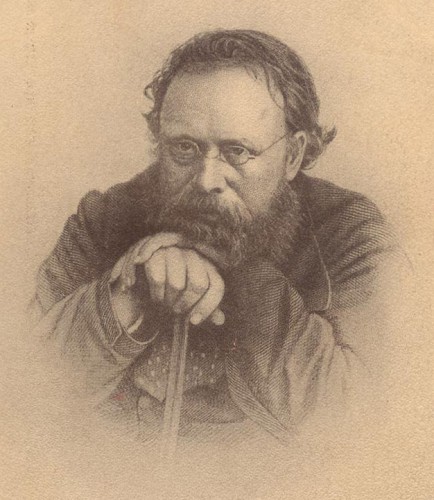

 del.icio.us
del.icio.us
 Digg
Digg
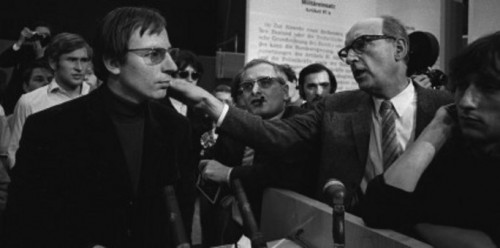
 Les hommages rendus à Krahl témoignent donc de cette absence de tact et de goût qui caractérise le “gourouïsme” du camp de la gauche libertaire, un “gourouïsme” que Krahl avait toujours combattu. Toutefois, ils reflétent une once de vérité et attestent encore du respect que suscitait l’itinéraire de Krahl chez ses camarades d’alors qui, pourtant, par la suite, n’auront ni son courage ni sa probité et n’ont jamais pu suivre ses traces, ni sur le plan intellectuel ni sur le plan politique. Après son enterrement au cimetière de Rickling, un centaine de militants du SDS, venus de toute l’Allemagne fédérale et de Berlin-Ouest, se réunissent dans les locaux de la “Techniche Universität” de Hanovre et décident, de manière certes informelle, de dissoudre leur association étudiante. Et, de fait, juste un mois plus tard, cette dissolution sera prononcée officiellement à Francfort-sur-le-Main.
Les hommages rendus à Krahl témoignent donc de cette absence de tact et de goût qui caractérise le “gourouïsme” du camp de la gauche libertaire, un “gourouïsme” que Krahl avait toujours combattu. Toutefois, ils reflétent une once de vérité et attestent encore du respect que suscitait l’itinéraire de Krahl chez ses camarades d’alors qui, pourtant, par la suite, n’auront ni son courage ni sa probité et n’ont jamais pu suivre ses traces, ni sur le plan intellectuel ni sur le plan politique. Après son enterrement au cimetière de Rickling, un centaine de militants du SDS, venus de toute l’Allemagne fédérale et de Berlin-Ouest, se réunissent dans les locaux de la “Techniche Universität” de Hanovre et décident, de manière certes informelle, de dissoudre leur association étudiante. Et, de fait, juste un mois plus tard, cette dissolution sera prononcée officiellement à Francfort-sur-le-Main. 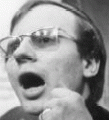 Avec Krahl meurt aussi l’esprit de 1968. Le 21 mars 1970, très exactement cinq semaines après la mort de Krahl, 400 membres du SDS se réunirent à la Maison des Etudiants de l’Université de Francfort pour tenir une réunion informelle et pour décréter la dissolution par acclamation du Bureau fédéral et, par voie de conséquence, de l’association elle-même. Udo Knapp, membre du Bureau, déclare alors que le SDS “n’a plus rien à apporter pour fixer le rapport entre les actions de masse et l’organisation du combat politique”. C’était évidemment la pure vérité. Après avoir longuement discuté de la question de l’héritage du SDS, l’assemblée s’est finalement déclarée incompétente pour statuer à ce sujet, car elle n’était pas une conférence de délégués en bonne et due forme: cette indécision marque la triste fin du SDS, devenu un boulet pour ses propres membres.
Avec Krahl meurt aussi l’esprit de 1968. Le 21 mars 1970, très exactement cinq semaines après la mort de Krahl, 400 membres du SDS se réunirent à la Maison des Etudiants de l’Université de Francfort pour tenir une réunion informelle et pour décréter la dissolution par acclamation du Bureau fédéral et, par voie de conséquence, de l’association elle-même. Udo Knapp, membre du Bureau, déclare alors que le SDS “n’a plus rien à apporter pour fixer le rapport entre les actions de masse et l’organisation du combat politique”. C’était évidemment la pure vérité. Après avoir longuement discuté de la question de l’héritage du SDS, l’assemblée s’est finalement déclarée incompétente pour statuer à ce sujet, car elle n’était pas une conférence de délégués en bonne et due forme: cette indécision marque la triste fin du SDS, devenu un boulet pour ses propres membres. 


 En ces temps où l’humanité, après essaimage et colonisation de nombreux Mondes, ne saurait être sérieusement menacée d’extinction, l’homme s’ennuie. Nous autres robots humanoïdes, au corps imitant si parfaitement nos modèles humains et à l’esprit ô combien proche de nos créateurs, avons sentis venir le temps où notre présence bienveillante ne sera plus requise. Il nous a toujours été particulièrement difficile d’appréhender les tendances auto-destructrices de l’esprit humain ; peut-être parce que nos circuits positroniques sont fondamentalement incapables, tout liés qu’ils sont par les Trois Lois de la Robotique, de tolérer ou même de comprendre une telle violence.
En ces temps où l’humanité, après essaimage et colonisation de nombreux Mondes, ne saurait être sérieusement menacée d’extinction, l’homme s’ennuie. Nous autres robots humanoïdes, au corps imitant si parfaitement nos modèles humains et à l’esprit ô combien proche de nos créateurs, avons sentis venir le temps où notre présence bienveillante ne sera plus requise. Il nous a toujours été particulièrement difficile d’appréhender les tendances auto-destructrices de l’esprit humain ; peut-être parce que nos circuits positroniques sont fondamentalement incapables, tout liés qu’ils sont par les Trois Lois de la Robotique, de tolérer ou même de comprendre une telle violence.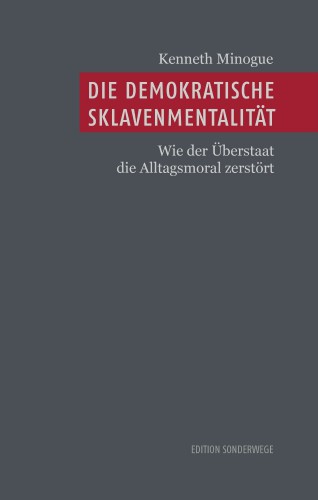
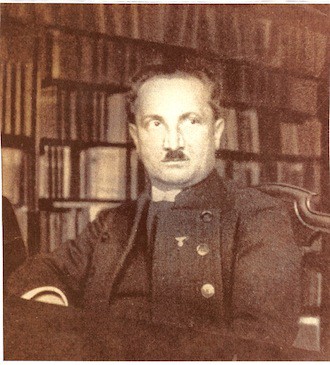 Expédier Heidegger en trois pages pour expliquer qu’il est un tenant de la tradition, ou d’une tradition, tient de la gageure. Je vais néanmoins m’y atteler, pour faire plaisir à Eugène Krampon et parce que, finalement, c’est une nécessité pédagogique dans un combat métapolitique comme le nôtre.
Expédier Heidegger en trois pages pour expliquer qu’il est un tenant de la tradition, ou d’une tradition, tient de la gageure. Je vais néanmoins m’y atteler, pour faire plaisir à Eugène Krampon et parce que, finalement, c’est une nécessité pédagogique dans un combat métapolitique comme le nôtre. 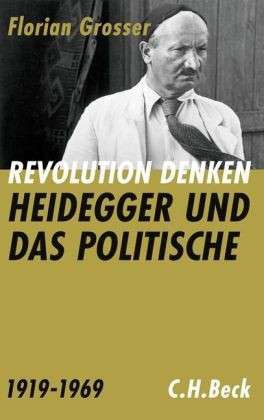 Deux solutions s’offrent alors à l’homme authentique: 1) amorcer un “nouveau commencement” (“neuer Anfang”) ou 2) accepter de faire pleinement connaissance de l’étranger (der “Fremde”), de ce qui lui est fondamentalement étranger, pour pouvoir mieux, en bout de course, s’ouvrir à son propre (das “Eigene”), quand il sera aperçu que ce fondamentalement étranger n’est pas assimilable à son propre. Dans le premier cas, il faut rompre “révolutionnairement” avec le processus métaphysique d’“enclôturement”, rejeter politiquement les régimes et les idéologies qui sont les produits finis et applicables de cette métaphysique de l’“enclôturement”. C’est ce que Heidegger a fait en prononçant son fameux “discours de rectorat” qui scellait son engagement national-socialiste en 1933-34. Le ré-alignement du nouveau régime sur des institutions imitées du wilhelminisme d’avant 1914 ou sur certaines normes de la République de Weimar, suite, notamment, à la “Nuit des longs couteaux” de juin 1934, plonge Heidegger dans le scepticisme: le régime semble n’être qu’un avatar supplémentaire de la “métaphysique enclôturante”, qui abandonne son “révolutionnisme” permanent, qui renonce à être l’agent moteur du “nouveau commencement”. C’est alors que Heidegger amorce sa nouvelle réflexion: il ne faut pas proposer, clef sur porte, un “nouveau commencement” car, ruse de l’histoire, celui-ci retombera dans les travers de la “métaphysique enclôturante”, à la façon d’une mauvaise habitude fatale, récurrente au cours de l’histoire occidentale. Au contraire: il faut attendre, faire oeuvre de patience (“Geduld”), car toute la trajectoire pluriséculaire de la métaphysique oeuvrant de manière “enclôturante” ne serait qu’un très long détour pour retrouver l’Etre, soit pour retrouver la possibilité d’être toujours authentique, de ne plus avoir face à soi des forces génératrices de barrières et de clôtures qui empêchent de retrouver le bon vieux soleil des Grecs. L’homme doit pourtant suivre ce trajet décevant pour se rendre compte que la trajectoire de la métaphysique “enclôturante” ne mène qu’à l’impasse et que répéter les formules diverses (et politiques) de cette métaphysique ne sert à rien. Ce sera alors le “tournant” (die “Wende”) de l’histoire, où il faudra se décider (“entscheiden”) à opter pour autre chose, pour un retour aux Grecs et à soi. Les éveillés doivent donc guetter le surgissement des “points de retournement” (des “Wendungspunkte”), où le pernicieux travail d’“enclôturement” patine, bafouille, se démasque (dans la mesure où il dévoile sa nature mutilante de l’hominité ontologique). C’est en de tels moments, souvent marqués par la nécessité ou la détresse (“die Not”), que l’homme peut décider (faire oeuvre d’“ex-sister”) et ainsi se sauver, échapper à tout “enclôturement” fatal et définitif. Cette décision salvatrice (“die Rettung”) est simultanément un retour vers l’intériorité de soi (“Einkehr”). L’homme rejette alors les régimes qui l’emprisonnent, par une décision audacieuse et, par là, existentielle, tout en retournant à lui-même, au “là” qui le détermine de toutes les façons dès le départ, mais qu’on a voulu lui faire oublier. Pour Heidegger, ce “là”, qu’il appelle après 1945, l’“Okzident”, n’est pas l’Occident synonyme d’américanosphère (qu’il rejette au même titre que le bolchevisme), mais, finalement, sa Souabe matrice de poésie et de philosophie profondes et authentiques, l’“Extrême-Ouest” du bassin danubien, l’amont —aux flancs de la Forêt Noire— d’un long fleuve qui, traversant toute l’Europe, coule vers les terres grecques des Argonautes, vers la Mer Noire, vers l’espace perse.
Deux solutions s’offrent alors à l’homme authentique: 1) amorcer un “nouveau commencement” (“neuer Anfang”) ou 2) accepter de faire pleinement connaissance de l’étranger (der “Fremde”), de ce qui lui est fondamentalement étranger, pour pouvoir mieux, en bout de course, s’ouvrir à son propre (das “Eigene”), quand il sera aperçu que ce fondamentalement étranger n’est pas assimilable à son propre. Dans le premier cas, il faut rompre “révolutionnairement” avec le processus métaphysique d’“enclôturement”, rejeter politiquement les régimes et les idéologies qui sont les produits finis et applicables de cette métaphysique de l’“enclôturement”. C’est ce que Heidegger a fait en prononçant son fameux “discours de rectorat” qui scellait son engagement national-socialiste en 1933-34. Le ré-alignement du nouveau régime sur des institutions imitées du wilhelminisme d’avant 1914 ou sur certaines normes de la République de Weimar, suite, notamment, à la “Nuit des longs couteaux” de juin 1934, plonge Heidegger dans le scepticisme: le régime semble n’être qu’un avatar supplémentaire de la “métaphysique enclôturante”, qui abandonne son “révolutionnisme” permanent, qui renonce à être l’agent moteur du “nouveau commencement”. C’est alors que Heidegger amorce sa nouvelle réflexion: il ne faut pas proposer, clef sur porte, un “nouveau commencement” car, ruse de l’histoire, celui-ci retombera dans les travers de la “métaphysique enclôturante”, à la façon d’une mauvaise habitude fatale, récurrente au cours de l’histoire occidentale. Au contraire: il faut attendre, faire oeuvre de patience (“Geduld”), car toute la trajectoire pluriséculaire de la métaphysique oeuvrant de manière “enclôturante” ne serait qu’un très long détour pour retrouver l’Etre, soit pour retrouver la possibilité d’être toujours authentique, de ne plus avoir face à soi des forces génératrices de barrières et de clôtures qui empêchent de retrouver le bon vieux soleil des Grecs. L’homme doit pourtant suivre ce trajet décevant pour se rendre compte que la trajectoire de la métaphysique “enclôturante” ne mène qu’à l’impasse et que répéter les formules diverses (et politiques) de cette métaphysique ne sert à rien. Ce sera alors le “tournant” (die “Wende”) de l’histoire, où il faudra se décider (“entscheiden”) à opter pour autre chose, pour un retour aux Grecs et à soi. Les éveillés doivent donc guetter le surgissement des “points de retournement” (des “Wendungspunkte”), où le pernicieux travail d’“enclôturement” patine, bafouille, se démasque (dans la mesure où il dévoile sa nature mutilante de l’hominité ontologique). C’est en de tels moments, souvent marqués par la nécessité ou la détresse (“die Not”), que l’homme peut décider (faire oeuvre d’“ex-sister”) et ainsi se sauver, échapper à tout “enclôturement” fatal et définitif. Cette décision salvatrice (“die Rettung”) est simultanément un retour vers l’intériorité de soi (“Einkehr”). L’homme rejette alors les régimes qui l’emprisonnent, par une décision audacieuse et, par là, existentielle, tout en retournant à lui-même, au “là” qui le détermine de toutes les façons dès le départ, mais qu’on a voulu lui faire oublier. Pour Heidegger, ce “là”, qu’il appelle après 1945, l’“Okzident”, n’est pas l’Occident synonyme d’américanosphère (qu’il rejette au même titre que le bolchevisme), mais, finalement, sa Souabe matrice de poésie et de philosophie profondes et authentiques, l’“Extrême-Ouest” du bassin danubien, l’amont —aux flancs de la Forêt Noire— d’un long fleuve qui, traversant toute l’Europe, coule vers les terres grecques des Argonautes, vers la Mer Noire, vers l’espace perse. 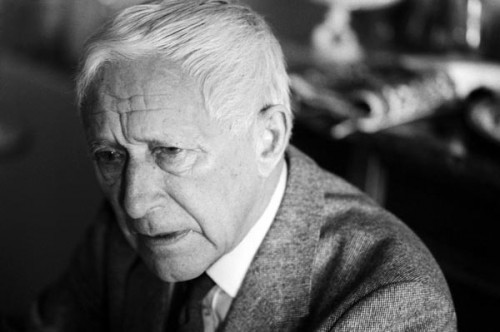
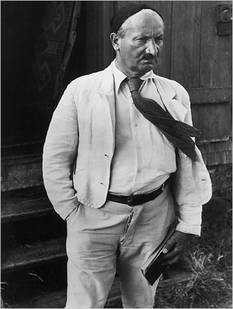 Le Cœur aventureux jüngérien est appelé à se faire précurseur et à suivre « le chemin d'une certaine astreinte ». La raison n'est pas congédiée mais interrogée; elle n'est point récusée, en faveur de son en-deçà mais requise à une astreinte nouvelle qui rend caduque les définitions, les descriptions, les discriminations dont elle se contentait jusqu'alors. « Que l'hégémonie de la raison s'établisse comme la rationalisation de tous les ordres, comme la normalisation, comme le nivellement, et cela dans le sillage du nihilisme européen, c'est là quelque chose qui donne autant à penser que la tentative de fuite vers l'irrationnel qui lui correspond. » A celui qui se tient sur la ligne, en précurseur et soumis à une astreinte nouvelle, il est donné de voir le rationnel et l'irrationnel comme deux formes concomitantes de superstition.
Le Cœur aventureux jüngérien est appelé à se faire précurseur et à suivre « le chemin d'une certaine astreinte ». La raison n'est pas congédiée mais interrogée; elle n'est point récusée, en faveur de son en-deçà mais requise à une astreinte nouvelle qui rend caduque les définitions, les descriptions, les discriminations dont elle se contentait jusqu'alors. « Que l'hégémonie de la raison s'établisse comme la rationalisation de tous les ordres, comme la normalisation, comme le nivellement, et cela dans le sillage du nihilisme européen, c'est là quelque chose qui donne autant à penser que la tentative de fuite vers l'irrationnel qui lui correspond. » A celui qui se tient sur la ligne, en précurseur et soumis à une astreinte nouvelle, il est donné de voir le rationnel et l'irrationnel comme deux formes concomitantes de superstition. 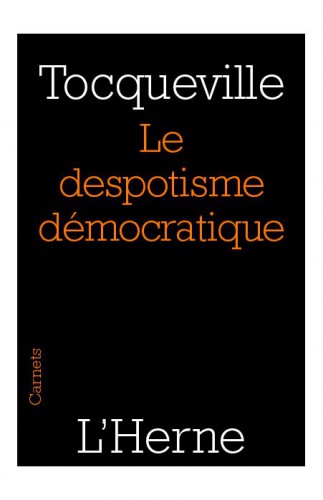
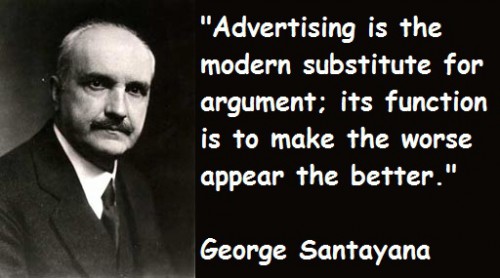
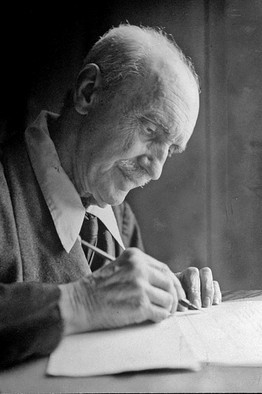 Er war z. B. Materialist und Atheist (Naturalist), schätzte aber die religiösen Traditionen des Katholizismus. Santayana kam während seines Studiums in Berlin in Berührung mit dem Werk Schopenhauers, über den er auch seine Dissertation schreiben wollte. Dies wurde ihm jedoch von seinem Doktorvater in den USA verwehrt. Die starken ästhetischen Interessen Santayanas wurden aber durch die Lektüre Schopenhauers gefördert – sein frühestes Werk, das sich auch gegen Kant richtete, unternahm bereits eine Verteidigung des Sinns für Schönheit (The Sense of Beauty, 1896).
Er war z. B. Materialist und Atheist (Naturalist), schätzte aber die religiösen Traditionen des Katholizismus. Santayana kam während seines Studiums in Berlin in Berührung mit dem Werk Schopenhauers, über den er auch seine Dissertation schreiben wollte. Dies wurde ihm jedoch von seinem Doktorvater in den USA verwehrt. Die starken ästhetischen Interessen Santayanas wurden aber durch die Lektüre Schopenhauers gefördert – sein frühestes Werk, das sich auch gegen Kant richtete, unternahm bereits eine Verteidigung des Sinns für Schönheit (The Sense of Beauty, 1896).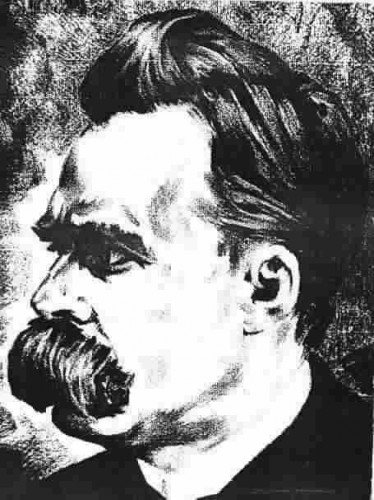 „Entartete Kultur“ – so charakterisierte Kardinal Meißner 2007 den unfruchtbaren Zustand modernen Kunstlebens. Sofort schallten die Alarmglocken der öffentlichen Meinung, die reflexartig den Bannfluch über die vermeintliche Nazivokabel aktualisierte. Ent-artung – was soviel meint wie „aus der Art schlagen“ – wurde tatsächlich von dem nationaljüdischen Arzt Max Nordau geprägt, und zwar im Rahmen einer Semantik, die bewusst das physiologische und kulturelle Feld miteinander verschränkte. Er transferierte die ursprünglich medizinische Vokabel auf kulturell-künstlerische Phänomene, um vor einer für die Menschheit ungesunden Kulturentwicklung zu warnen. Unter anderem geriet Friedrich Nietzsche unter Nordaus Entartungsverdikt. Der Philosoph, der sich selbst als „Arzt der Kultur“ verstand, hatte nicht zuletzt selbst von einer „Degenereszenz der Instinkte“ als einer Ursache kultureller décadence gesprochen und empfahl den Übermenschen als Remedur zugunsten einer „Höherzüchtung der Menschheit“. Es sieht so aus, als könne man eine Kontinuität zu eugenischen Programmen und Sozialhygienemaßnahmen herstellen, die im 20. Jahrhundert verhängnisvolle Folgen zeitigen sollten. Es scheint, als wäre das Entartungstheorem das darwinistische Pendant der radikalen Rechten zum marxistischen Entfremdungstheorem der radikalen Linken. Beide eröffnen eine ‚engineering’-Perspektive auf Mensch und Gesellschaft, die heute im gender-mainstreaming oder den Anthropotechniken fröhliche Urständ feiert und das befürchten lässt, was C. S. Lewis die Abschaffung des Menschen nennt.
„Entartete Kultur“ – so charakterisierte Kardinal Meißner 2007 den unfruchtbaren Zustand modernen Kunstlebens. Sofort schallten die Alarmglocken der öffentlichen Meinung, die reflexartig den Bannfluch über die vermeintliche Nazivokabel aktualisierte. Ent-artung – was soviel meint wie „aus der Art schlagen“ – wurde tatsächlich von dem nationaljüdischen Arzt Max Nordau geprägt, und zwar im Rahmen einer Semantik, die bewusst das physiologische und kulturelle Feld miteinander verschränkte. Er transferierte die ursprünglich medizinische Vokabel auf kulturell-künstlerische Phänomene, um vor einer für die Menschheit ungesunden Kulturentwicklung zu warnen. Unter anderem geriet Friedrich Nietzsche unter Nordaus Entartungsverdikt. Der Philosoph, der sich selbst als „Arzt der Kultur“ verstand, hatte nicht zuletzt selbst von einer „Degenereszenz der Instinkte“ als einer Ursache kultureller décadence gesprochen und empfahl den Übermenschen als Remedur zugunsten einer „Höherzüchtung der Menschheit“. Es sieht so aus, als könne man eine Kontinuität zu eugenischen Programmen und Sozialhygienemaßnahmen herstellen, die im 20. Jahrhundert verhängnisvolle Folgen zeitigen sollten. Es scheint, als wäre das Entartungstheorem das darwinistische Pendant der radikalen Rechten zum marxistischen Entfremdungstheorem der radikalen Linken. Beide eröffnen eine ‚engineering’-Perspektive auf Mensch und Gesellschaft, die heute im gender-mainstreaming oder den Anthropotechniken fröhliche Urständ feiert und das befürchten lässt, was C. S. Lewis die Abschaffung des Menschen nennt.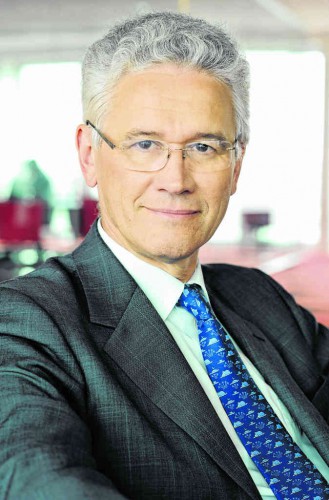
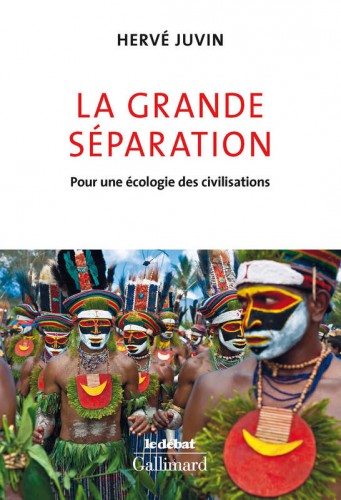
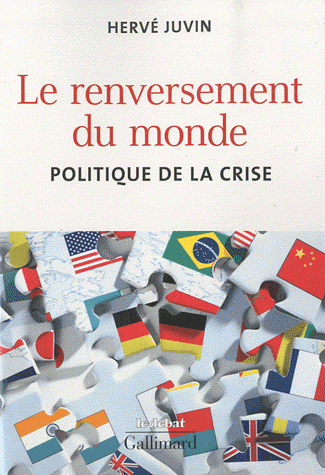 BR :
BR : 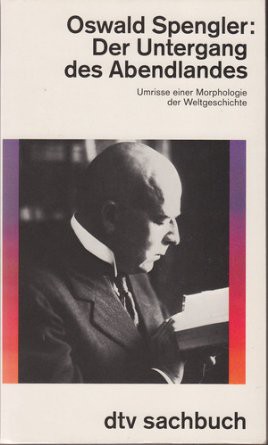 If I had to choose one word to explain why the West has been the most creative civilization it would be “Faustian.” My choice of this word hinges on the realization that the West has been following a unique cultural path since ancient times in the course of which it has exhibited far higher levels of achievement in all the intellectual, artistic, and heroic spheres of life.
If I had to choose one word to explain why the West has been the most creative civilization it would be “Faustian.” My choice of this word hinges on the realization that the West has been following a unique cultural path since ancient times in the course of which it has exhibited far higher levels of achievement in all the intellectual, artistic, and heroic spheres of life.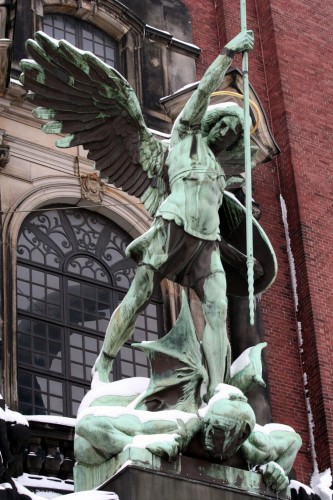 We need an explanation for this incredible discrepancy. But what exactly is the Faustian soul? How do we connect it to Europe’s creativity? To what original source or starting place did Spengler attribute this yearning for infinity? He directed attention to the barbarian peoples of northern Europe. In Man and Technics, he wrote of how the Nordic climate forged a character filled with vitality, “an intellect sharpened to the most extreme degree, with the cold fervour of an irrepressible passion for struggling, daring, driving forward.” The Nordic character was a human biological being to be sure, but one animated with the spirit of a “proud beast of prey,” like that of an “eagle, lion, [or] tiger.” For this Nordic individual, “the concerns of life, the deed, became more important than mere physical existence.” He wants to climb high, soar upward and reach ever higher levels of existential intensity. Adaptation and reproduction are not enough (Man and Technics: A Contribution to a Philosophy of Life, Greenwood Press, 1976: 19-41).
We need an explanation for this incredible discrepancy. But what exactly is the Faustian soul? How do we connect it to Europe’s creativity? To what original source or starting place did Spengler attribute this yearning for infinity? He directed attention to the barbarian peoples of northern Europe. In Man and Technics, he wrote of how the Nordic climate forged a character filled with vitality, “an intellect sharpened to the most extreme degree, with the cold fervour of an irrepressible passion for struggling, daring, driving forward.” The Nordic character was a human biological being to be sure, but one animated with the spirit of a “proud beast of prey,” like that of an “eagle, lion, [or] tiger.” For this Nordic individual, “the concerns of life, the deed, became more important than mere physical existence.” He wants to climb high, soar upward and reach ever higher levels of existential intensity. Adaptation and reproduction are not enough (Man and Technics: A Contribution to a Philosophy of Life, Greenwood Press, 1976: 19-41).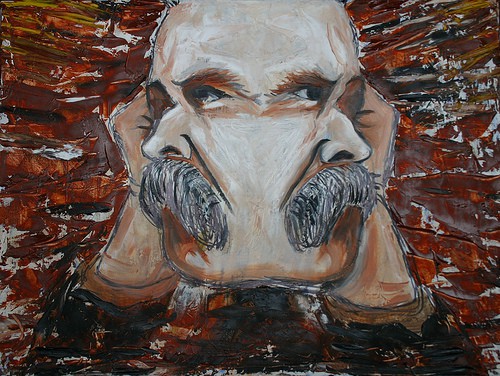


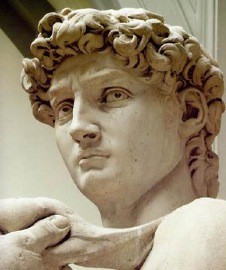 Men of the 19th and early 20th centuries also saw manliness not simply as a collection of different virtues, but as a virtue in and of itself – a distinct quality. They encouraged men to embrace manliness as the crown of character – as a kind of ineffable bonus power that was produced when all the other virtues were combined (the Captain Planet of the virtues, if you will). Manliness was often noted as a separate, preeminent trait in men worthy of admiration:
Men of the 19th and early 20th centuries also saw manliness not simply as a collection of different virtues, but as a virtue in and of itself – a distinct quality. They encouraged men to embrace manliness as the crown of character – as a kind of ineffable bonus power that was produced when all the other virtues were combined (the Captain Planet of the virtues, if you will). Manliness was often noted as a separate, preeminent trait in men worthy of admiration: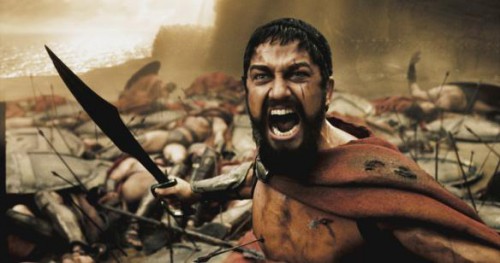
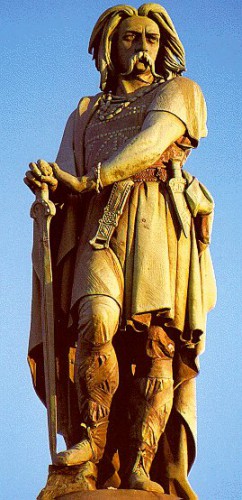 One of the most poignant tales of a famous man admitting to being unmanned comes from Abraham Lincoln. One of the first deaths in the Civil War – Elmer Ellsworth — was a close friend of the president. Right after receiving news of Ellsworth’s death, a reporter and Senator came into the White House library to speak with Lincoln. Upon entering, they saw him gazing mournfully out the window at the Potomac. He abruptly turned around, stuck out his arm, and said, “Excuse me, but I cannot talk.” He then burst into tears and began walking around the room, holding a handkerchief to his face as he cried. The two visitors were unsure of what to do; as the reporter later remembered, they were “moved at such an unusual spectacle, in such a man, in such a place.” After several minutes, the president turned to them and said, “I make no apology gentlemen, for my weakness, but I knew poor Ellsworth well, and held him in high regard. Just as you entered the room, Captain Fox left me, after giving me the painful details of his unfortunate death. The event was so unexpected, and the recital so touching, that it quite unmanned me.” Lincoln then “made a violent attempt to restrain his emotion” before sharing the details of his friend’s death.
One of the most poignant tales of a famous man admitting to being unmanned comes from Abraham Lincoln. One of the first deaths in the Civil War – Elmer Ellsworth — was a close friend of the president. Right after receiving news of Ellsworth’s death, a reporter and Senator came into the White House library to speak with Lincoln. Upon entering, they saw him gazing mournfully out the window at the Potomac. He abruptly turned around, stuck out his arm, and said, “Excuse me, but I cannot talk.” He then burst into tears and began walking around the room, holding a handkerchief to his face as he cried. The two visitors were unsure of what to do; as the reporter later remembered, they were “moved at such an unusual spectacle, in such a man, in such a place.” After several minutes, the president turned to them and said, “I make no apology gentlemen, for my weakness, but I knew poor Ellsworth well, and held him in high regard. Just as you entered the room, Captain Fox left me, after giving me the painful details of his unfortunate death. The event was so unexpected, and the recital so touching, that it quite unmanned me.” Lincoln then “made a violent attempt to restrain his emotion” before sharing the details of his friend’s death.
